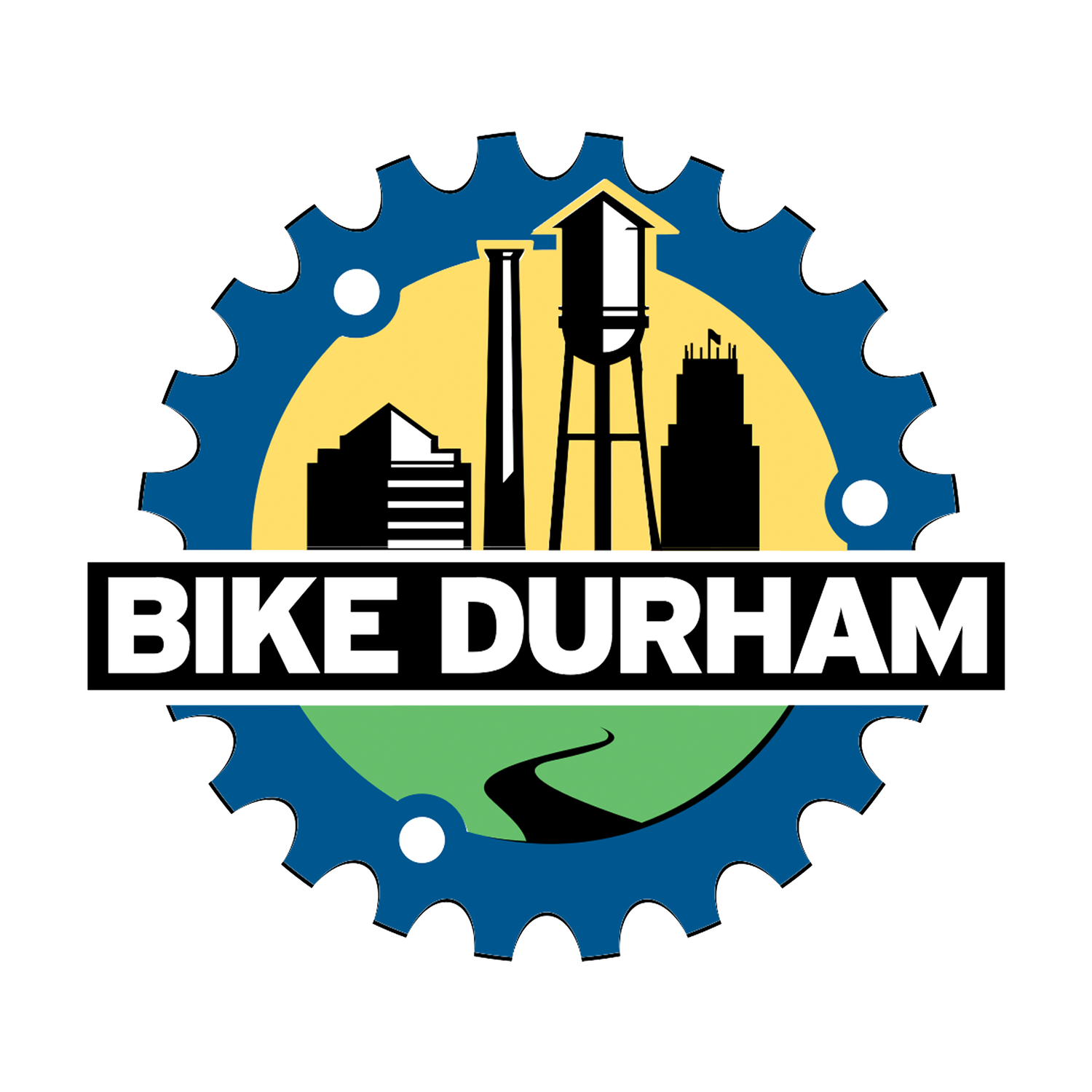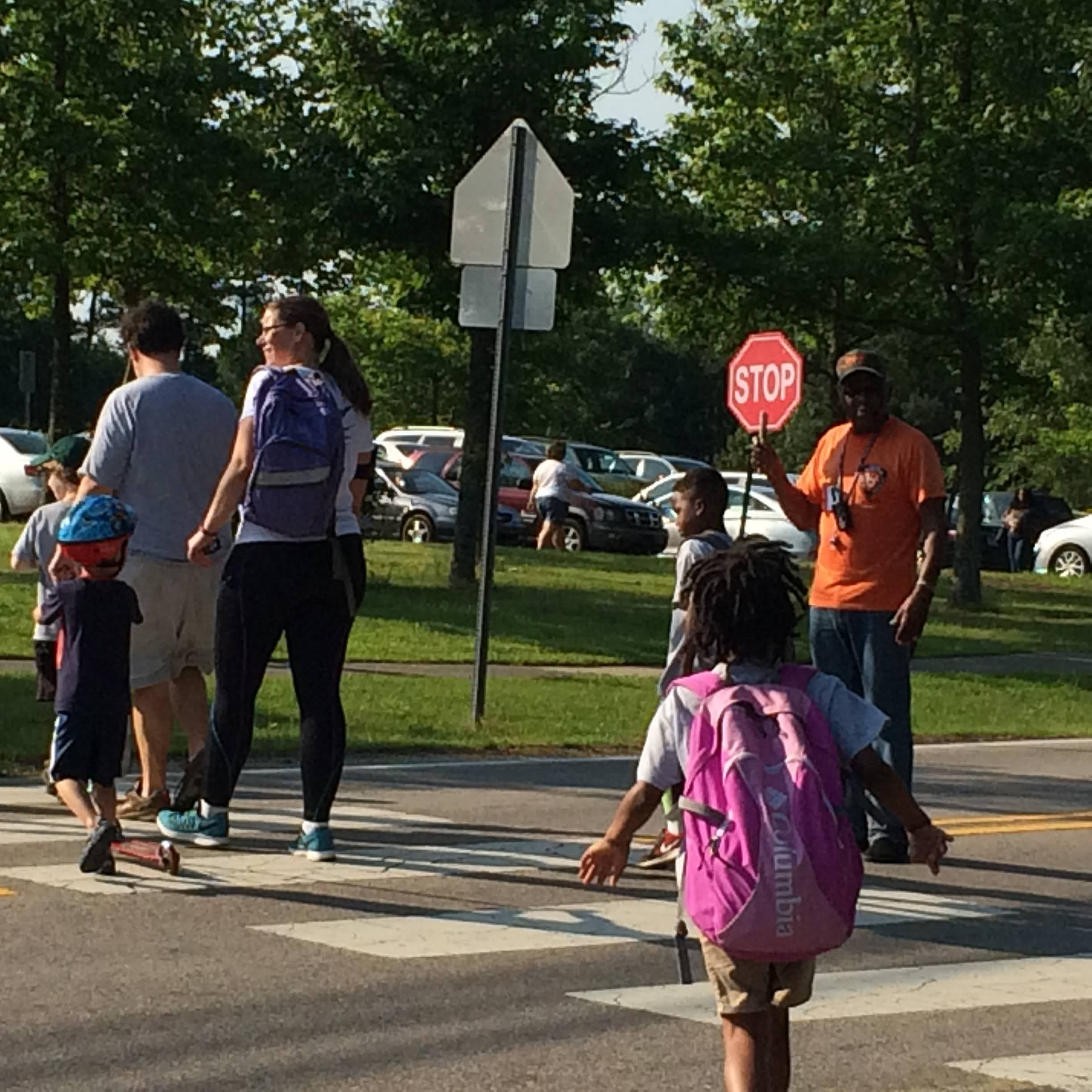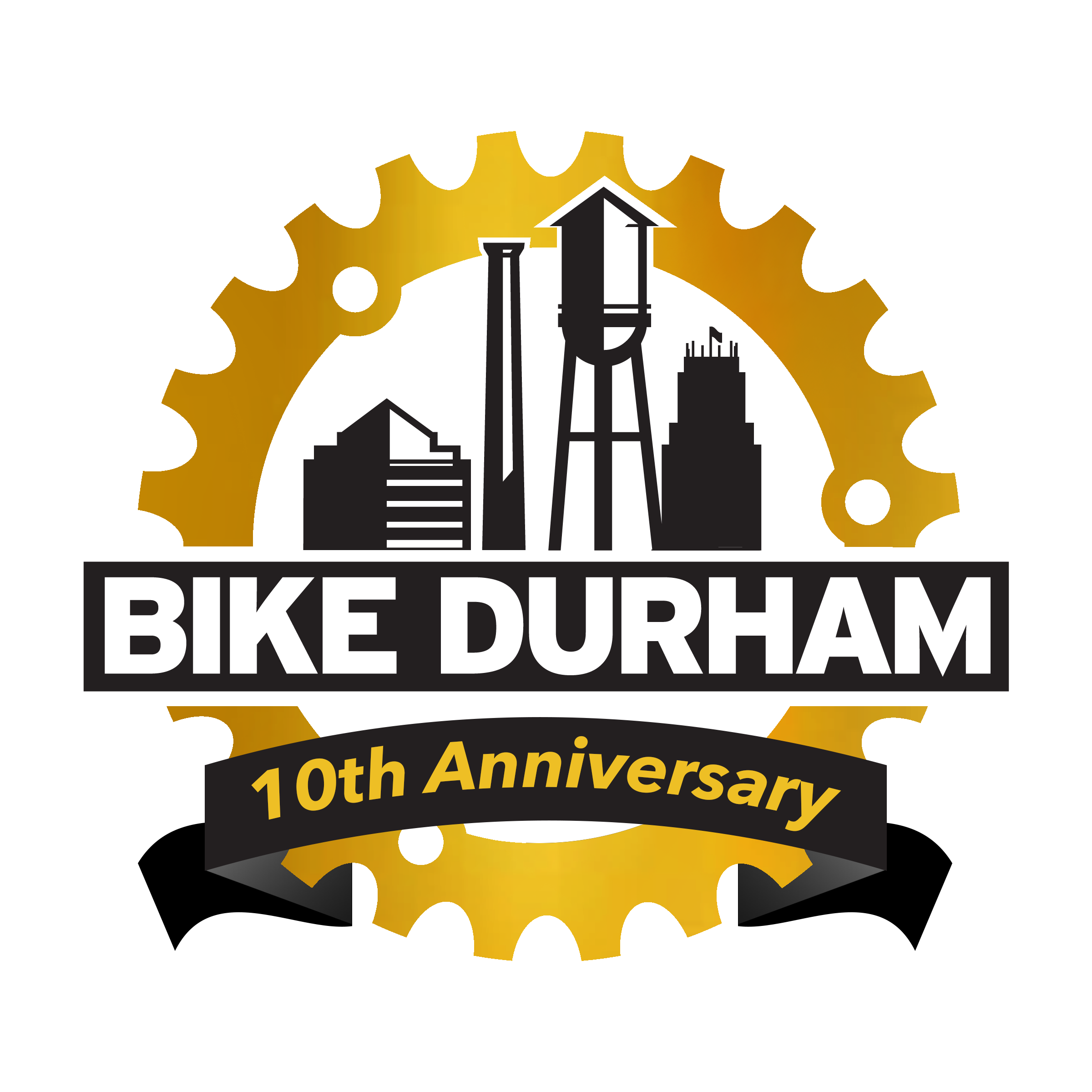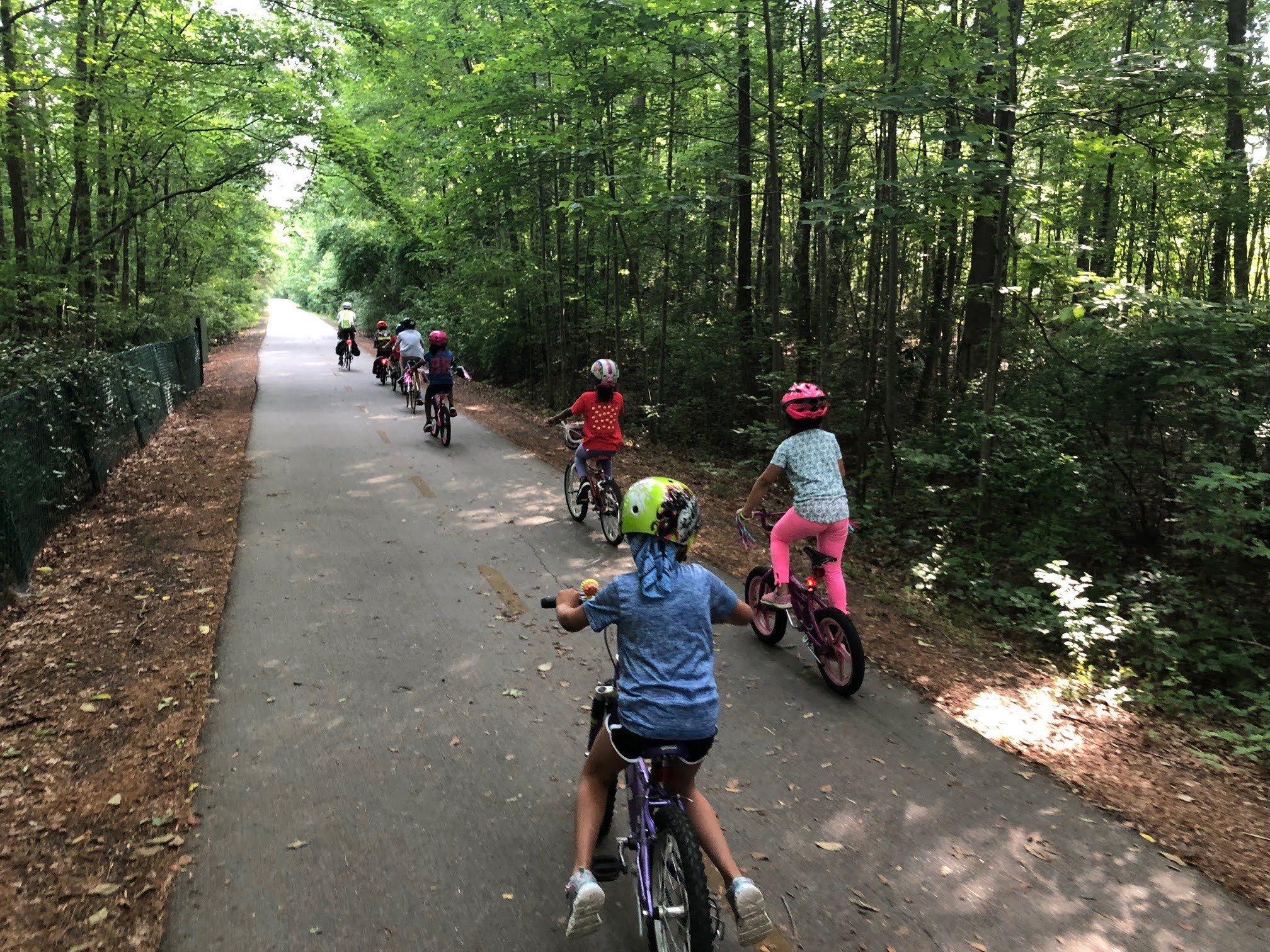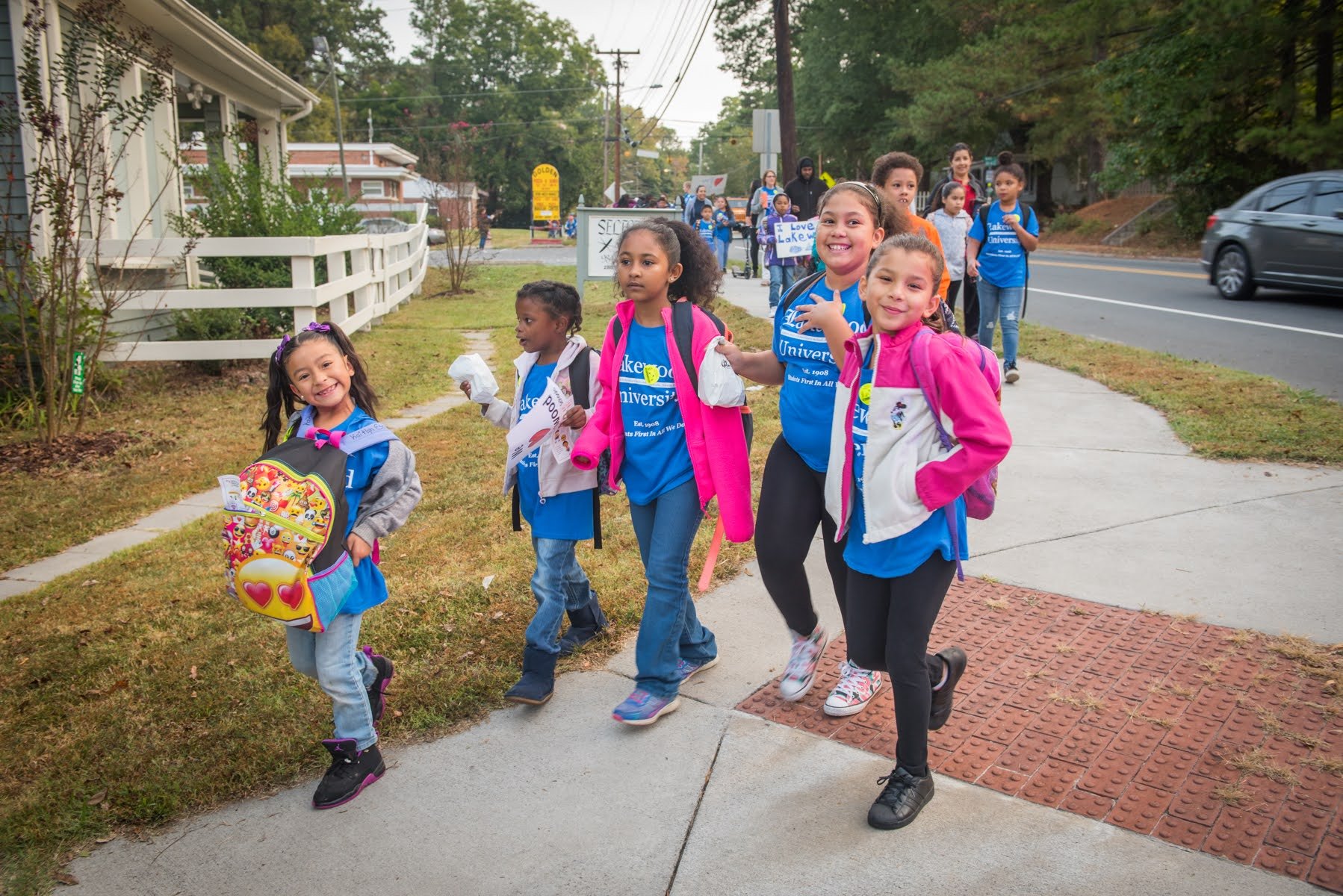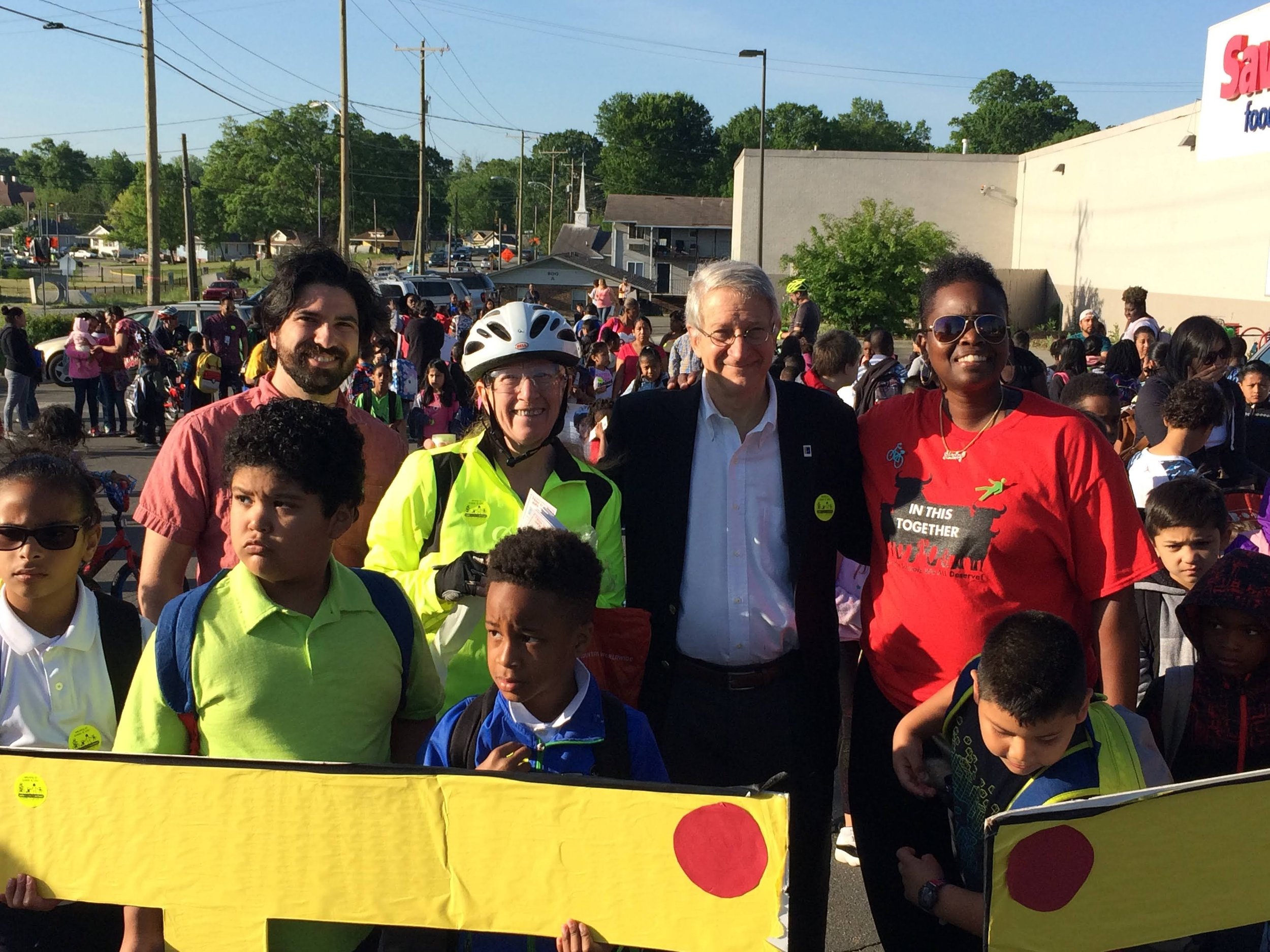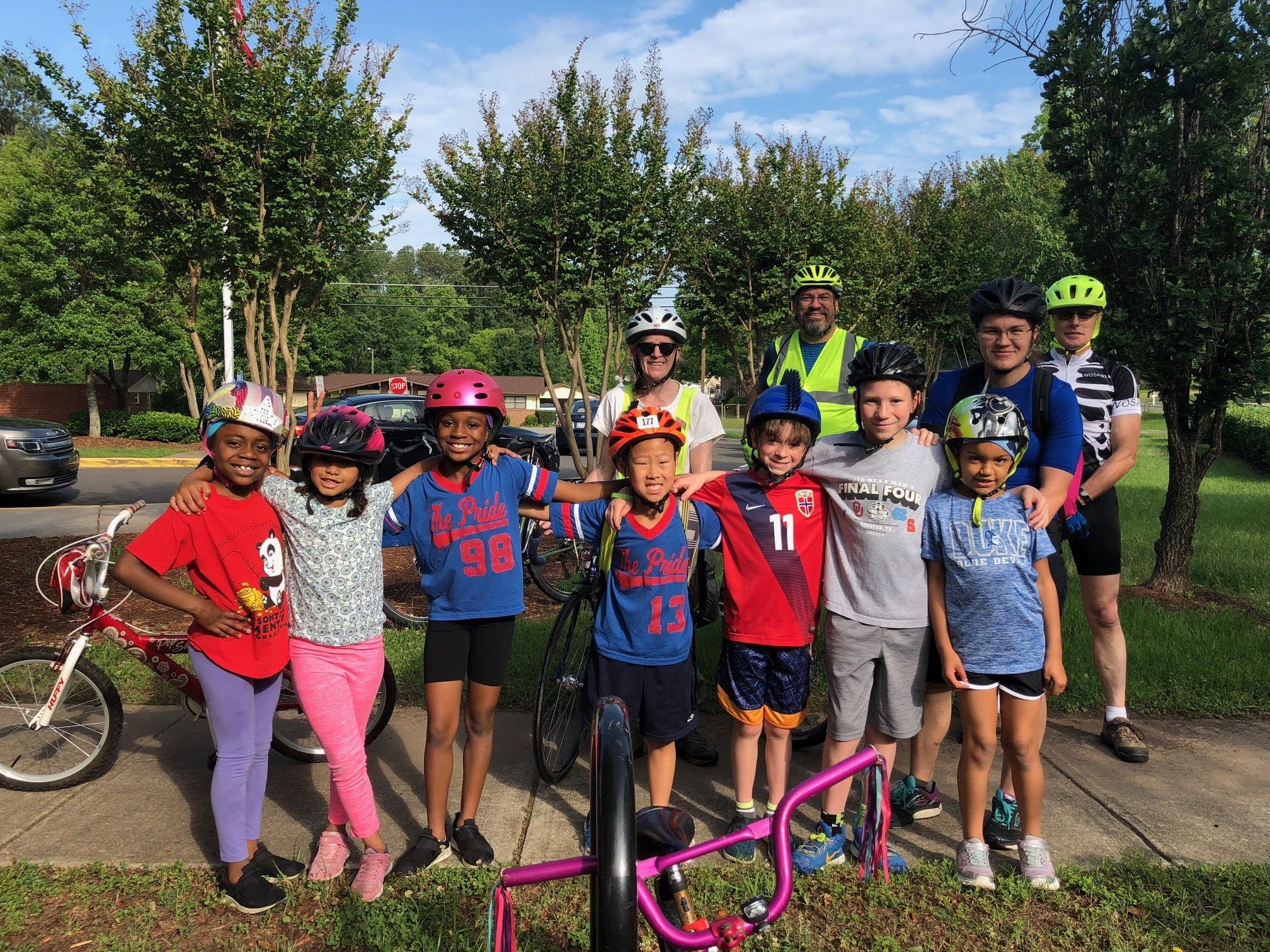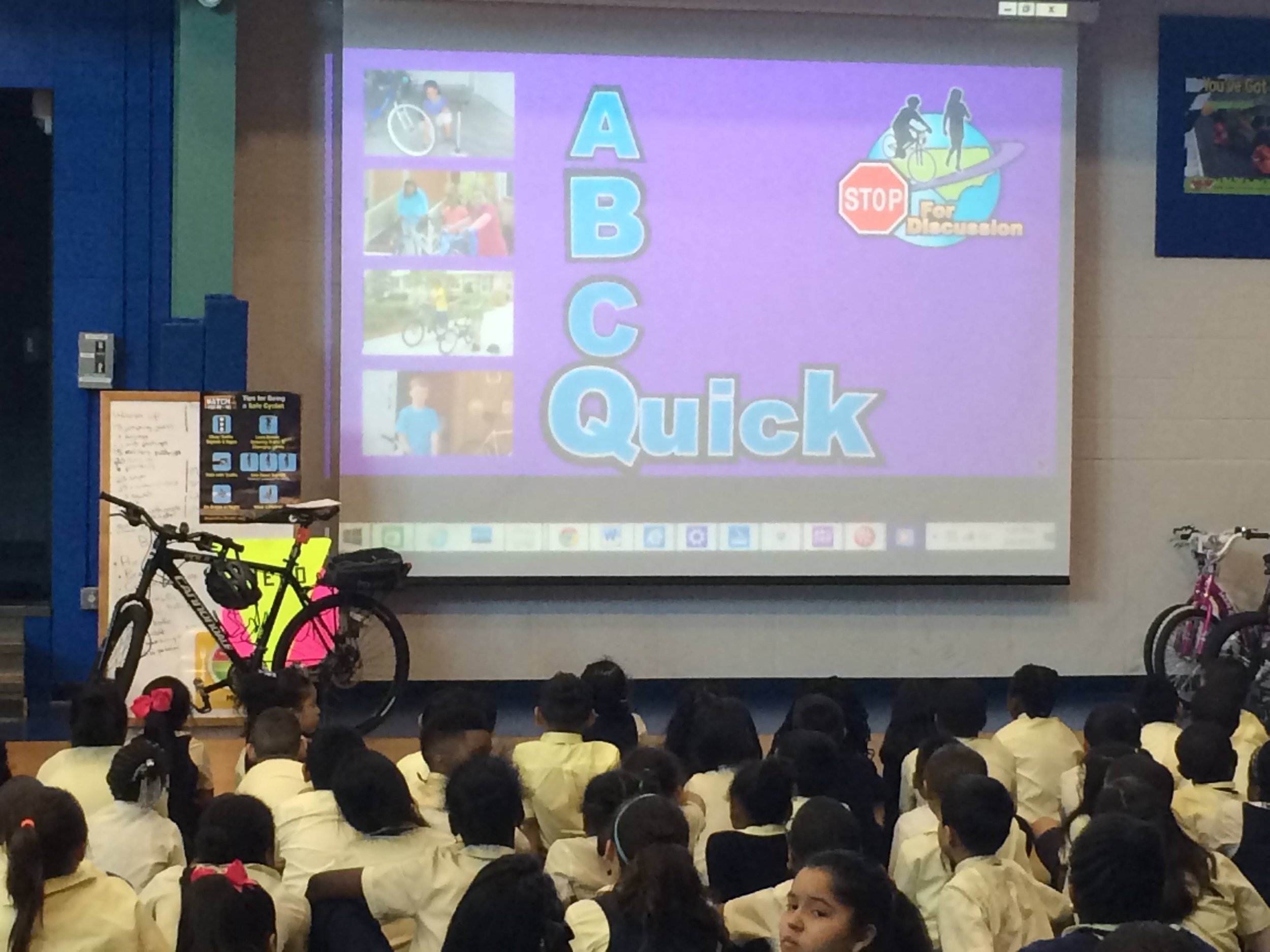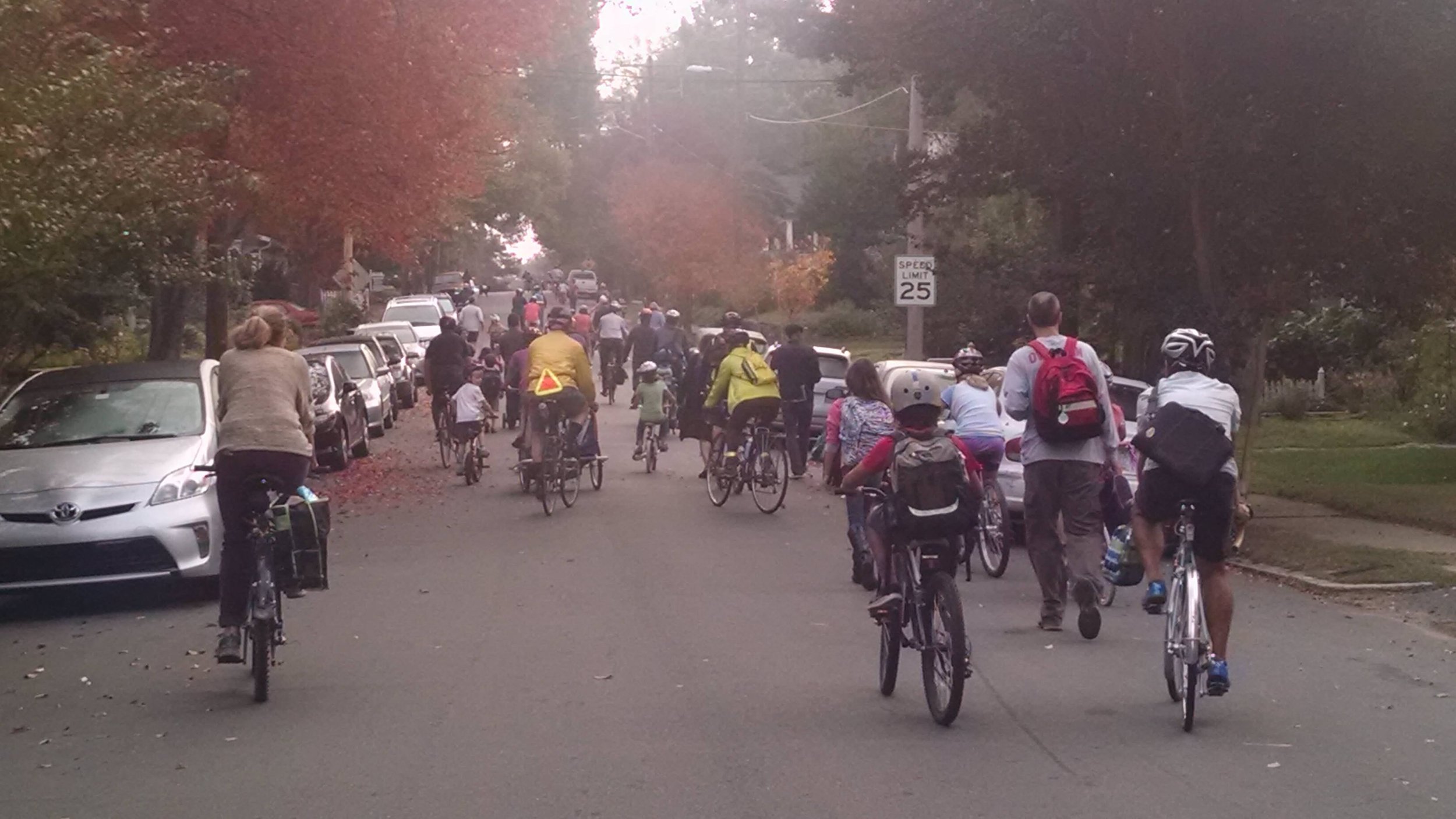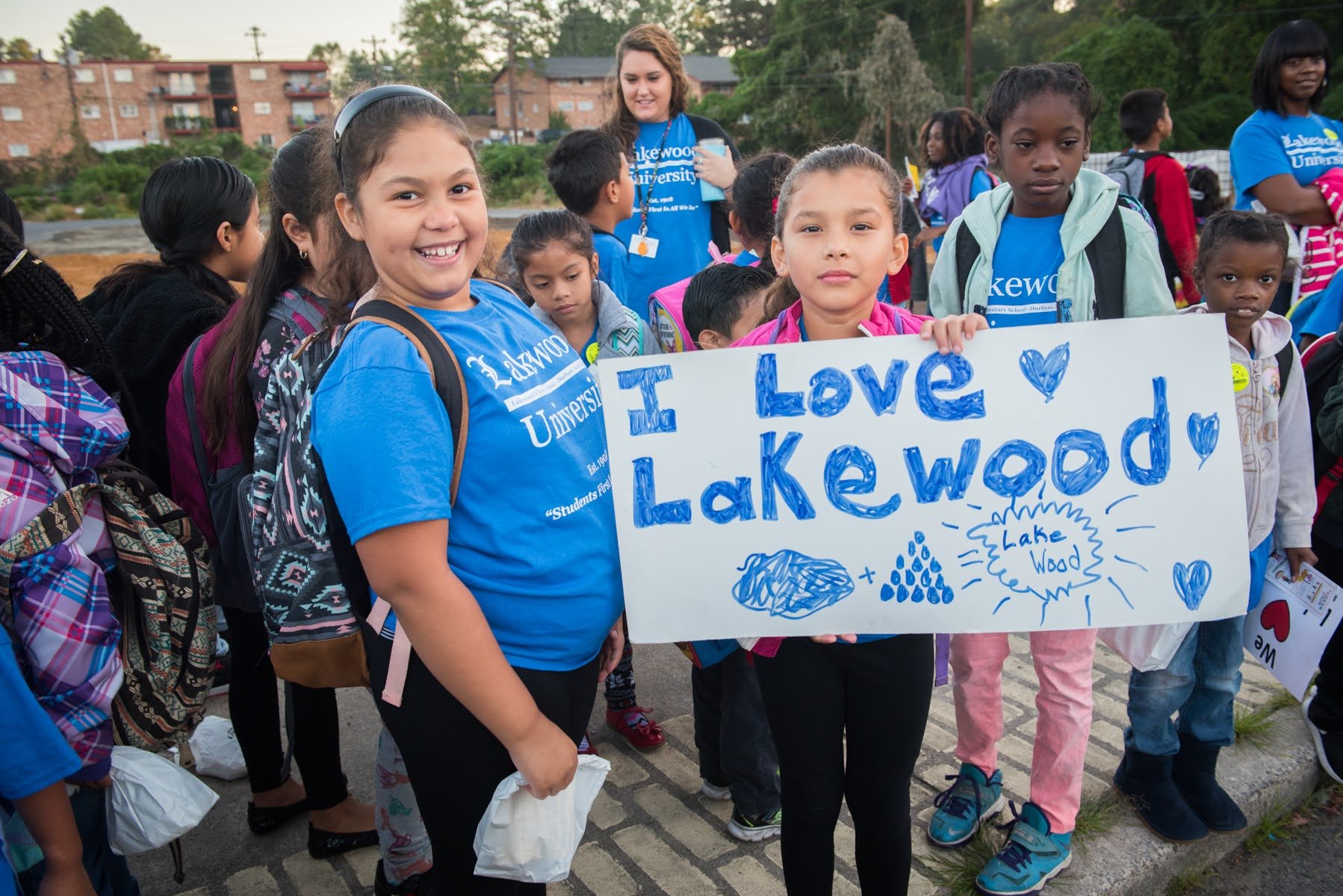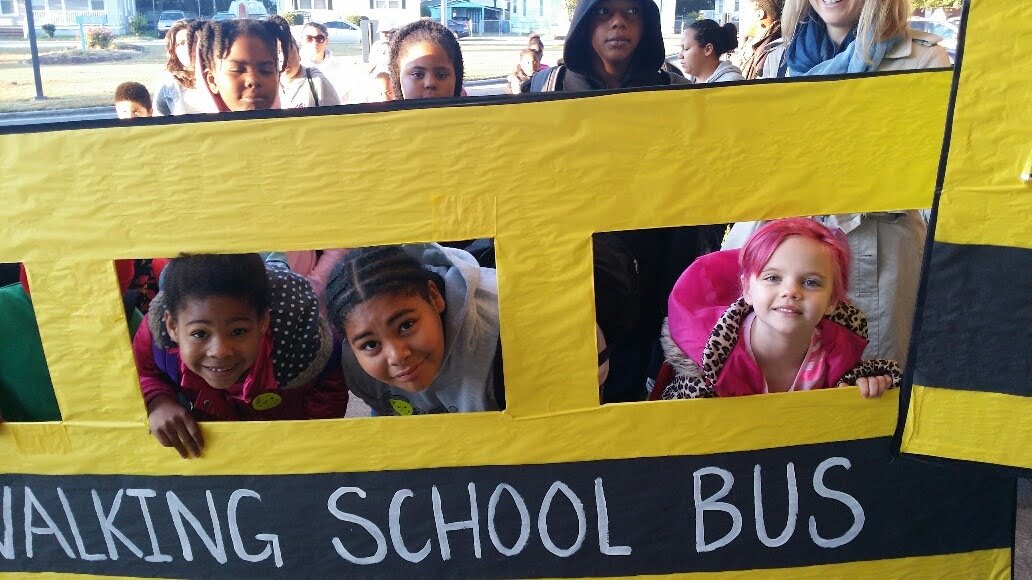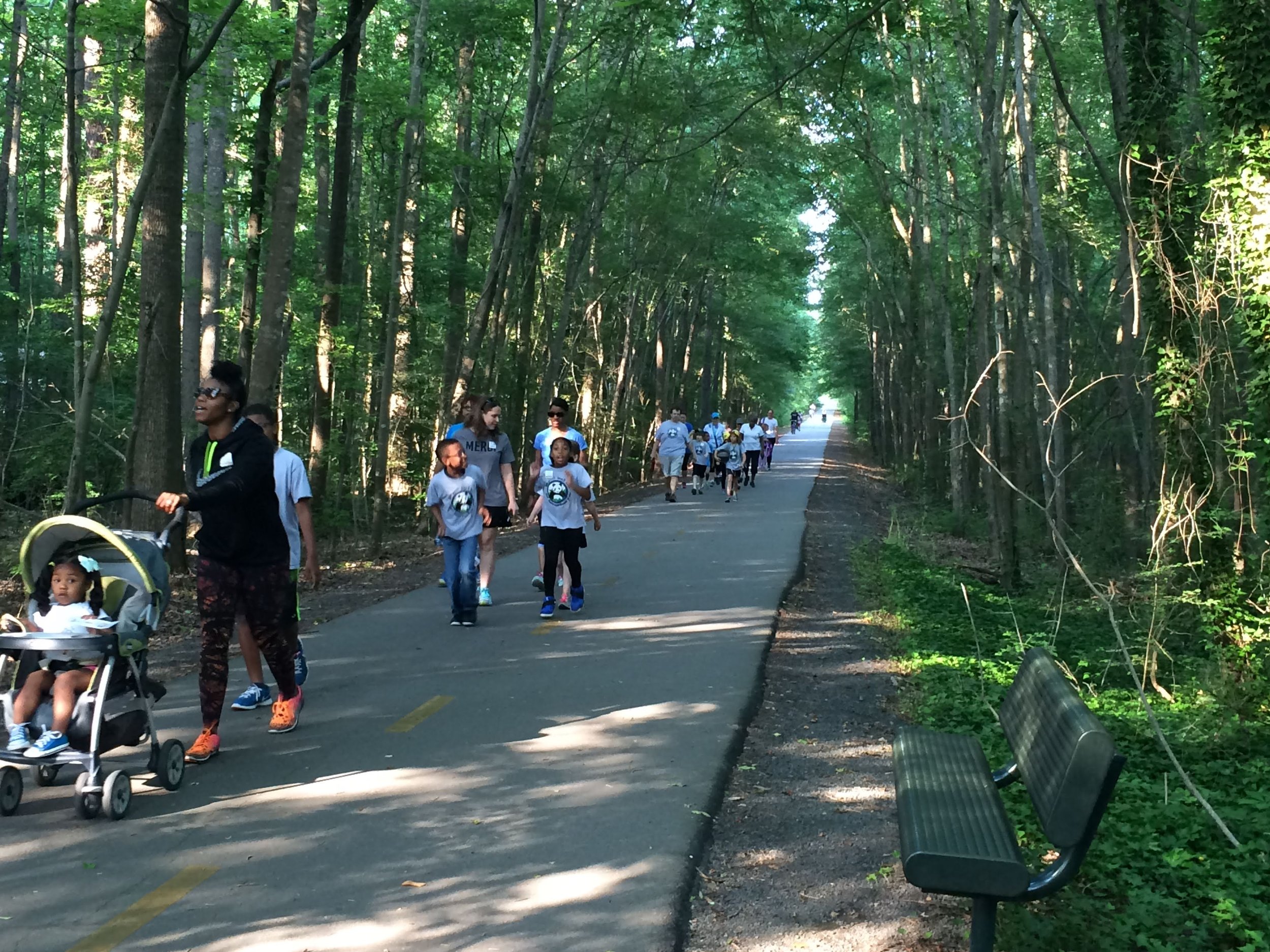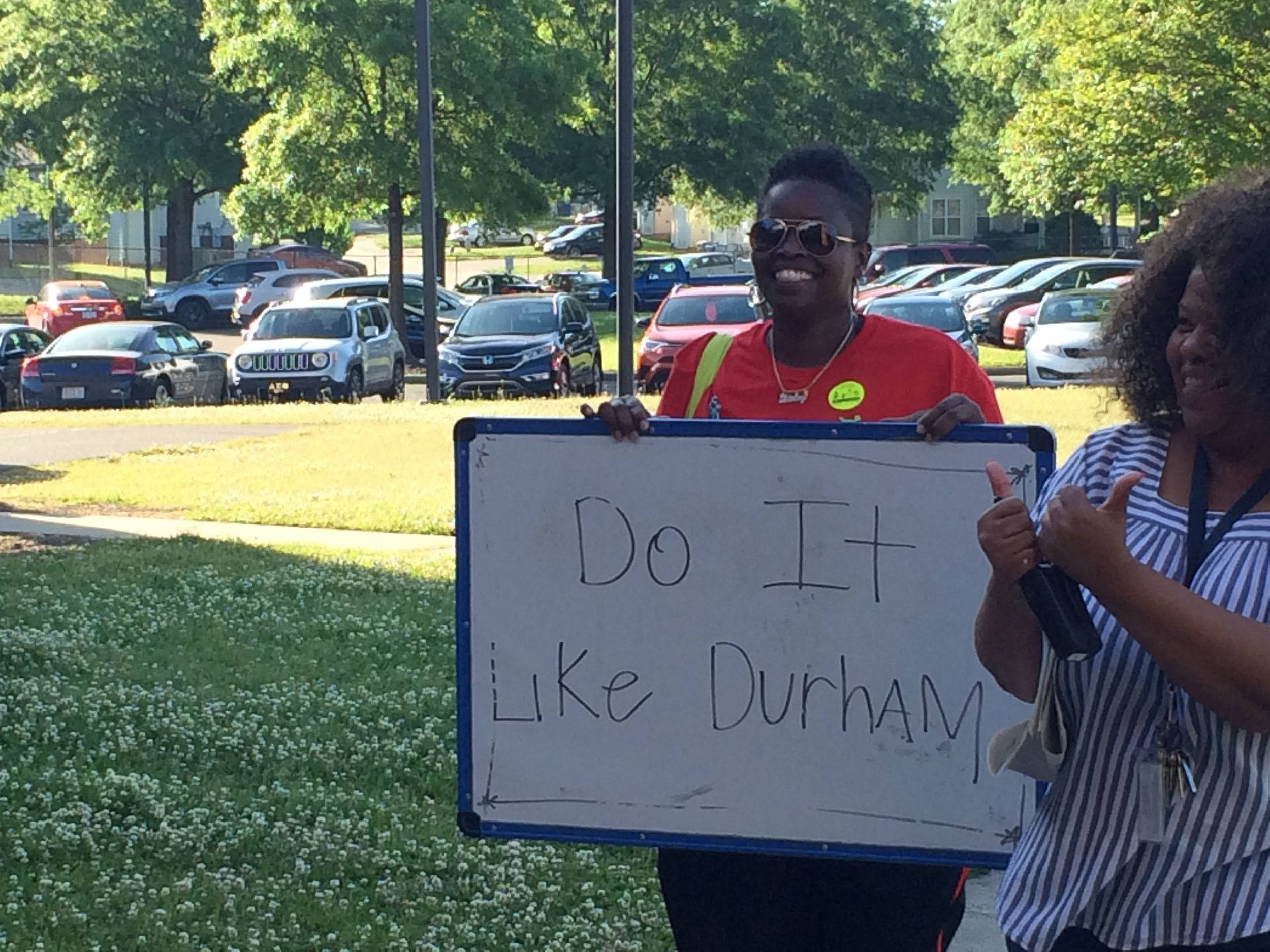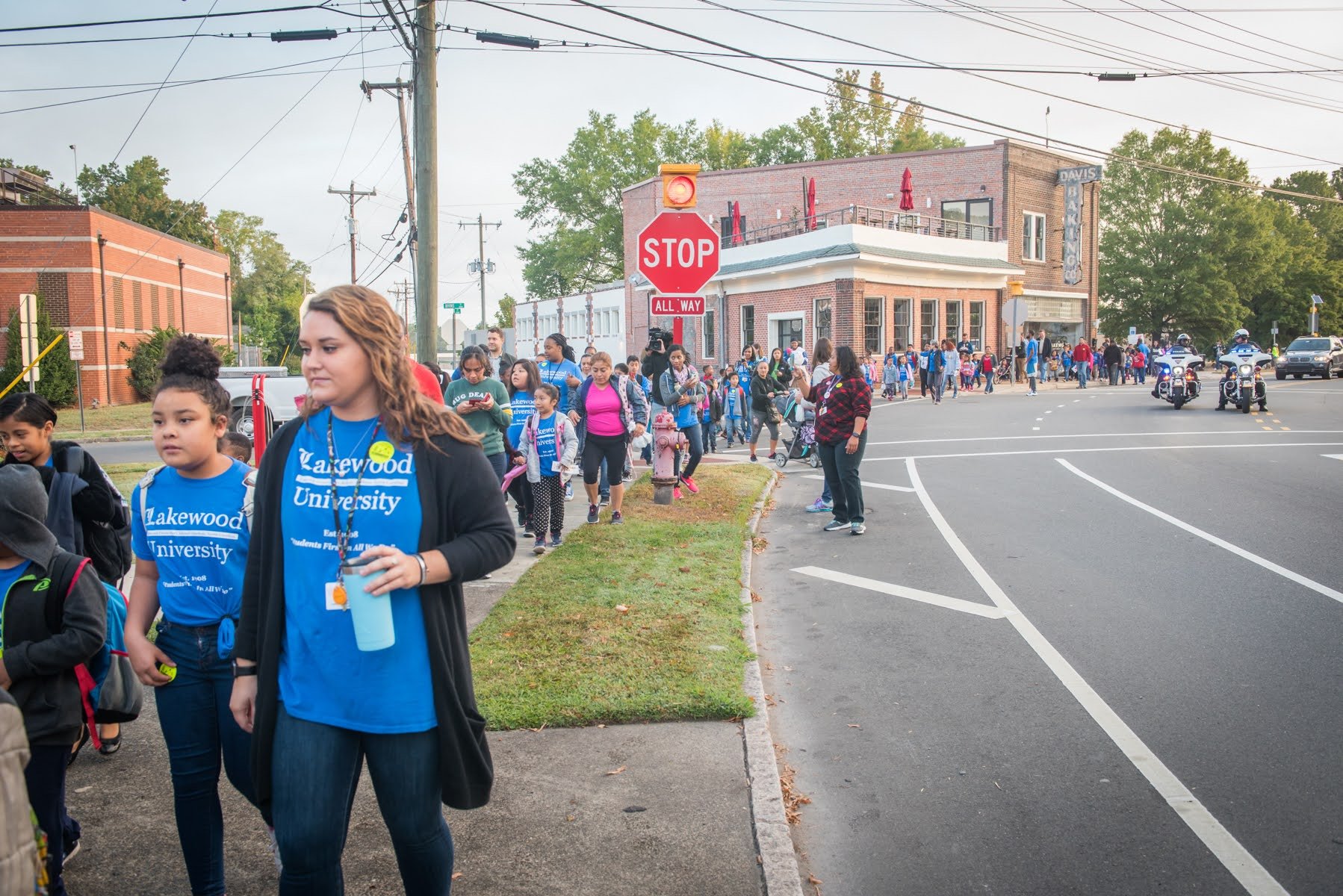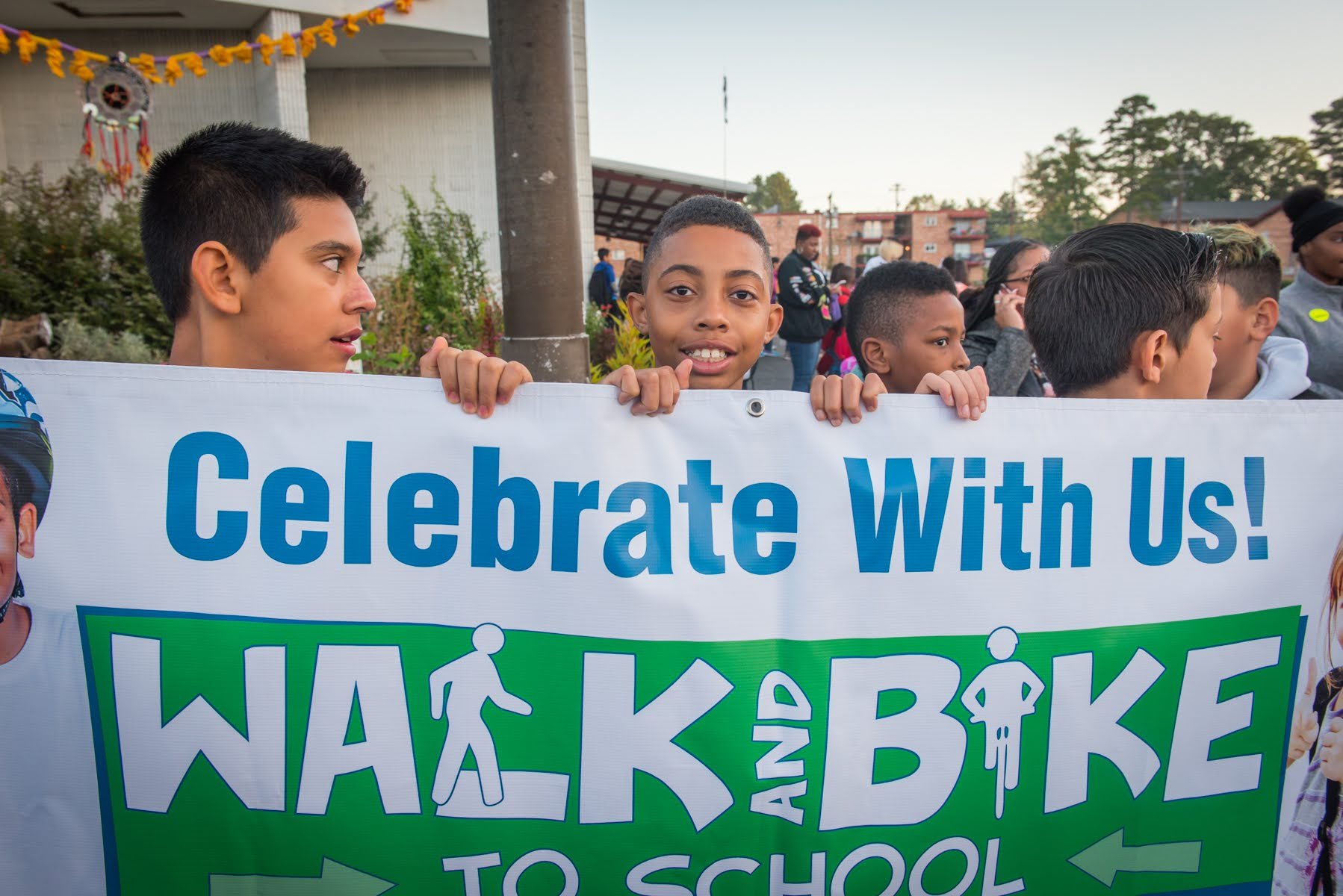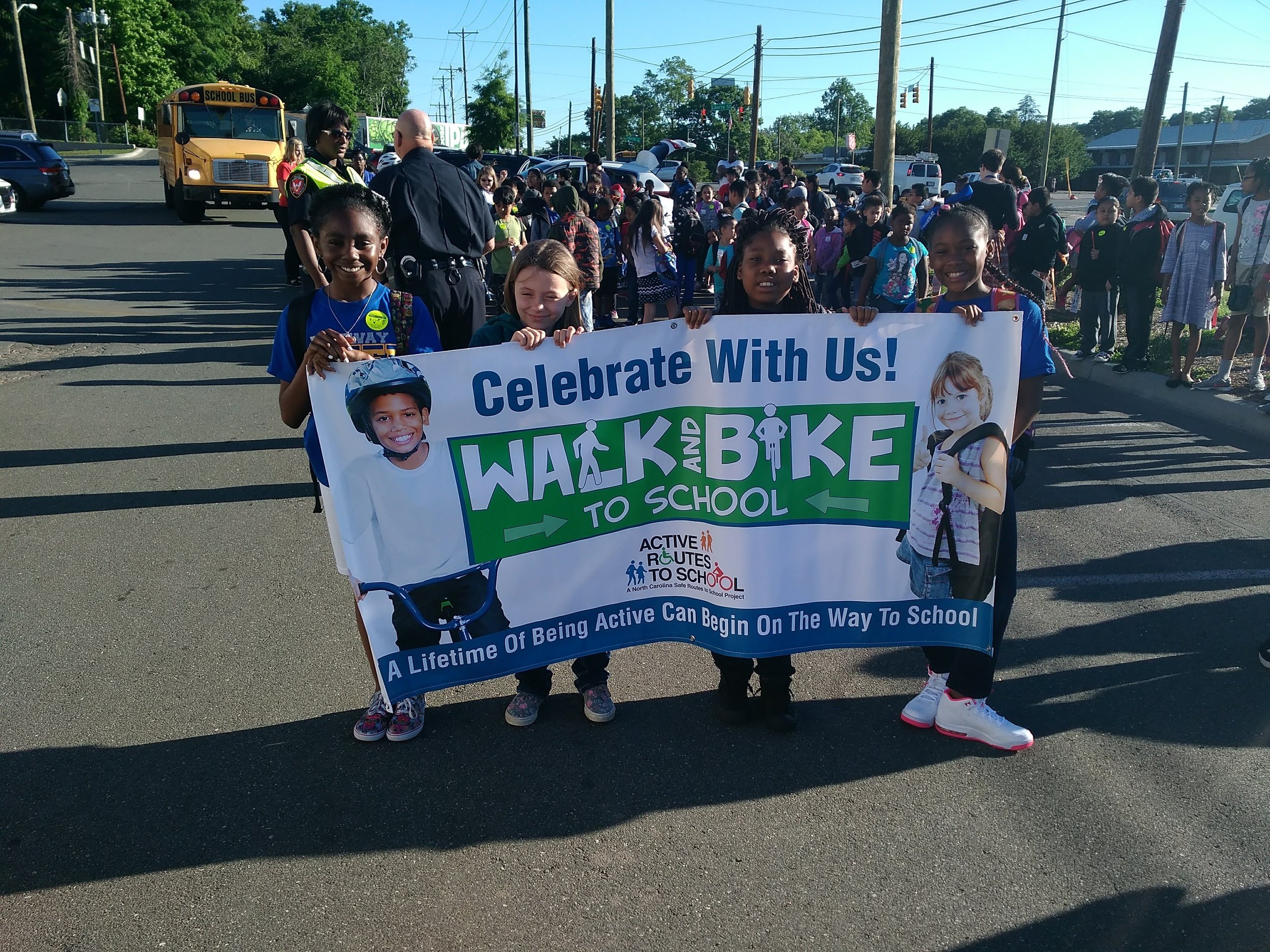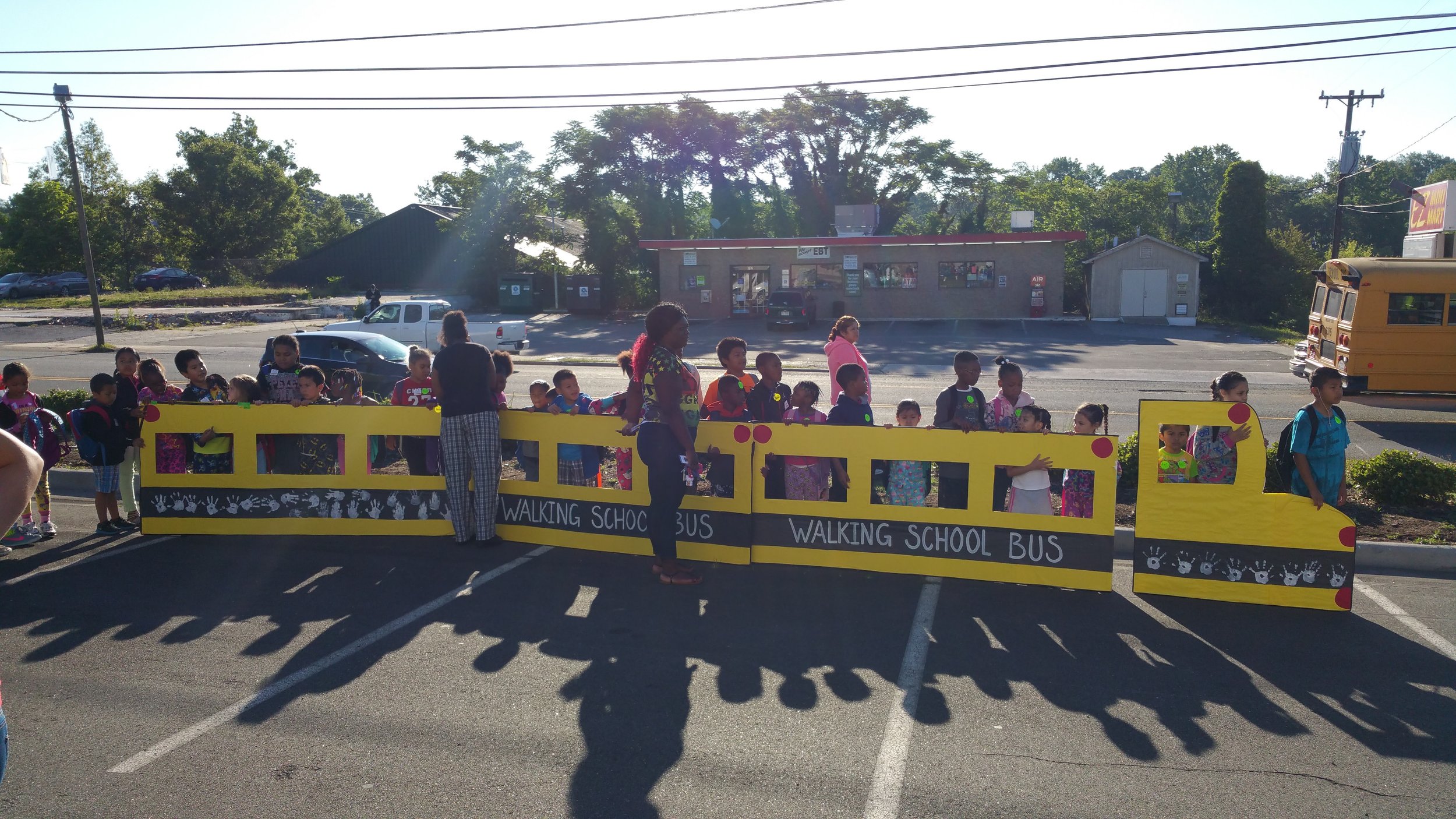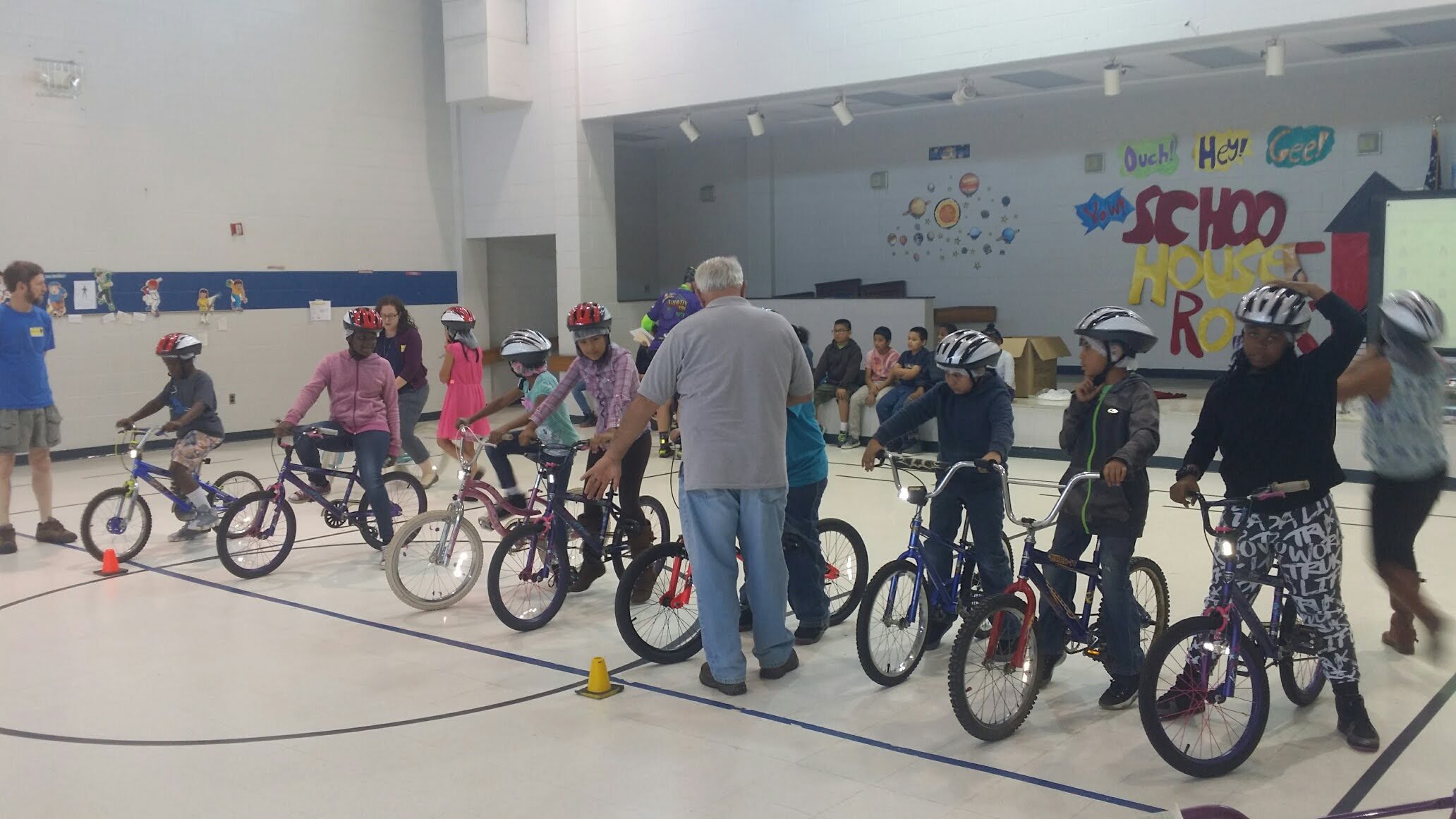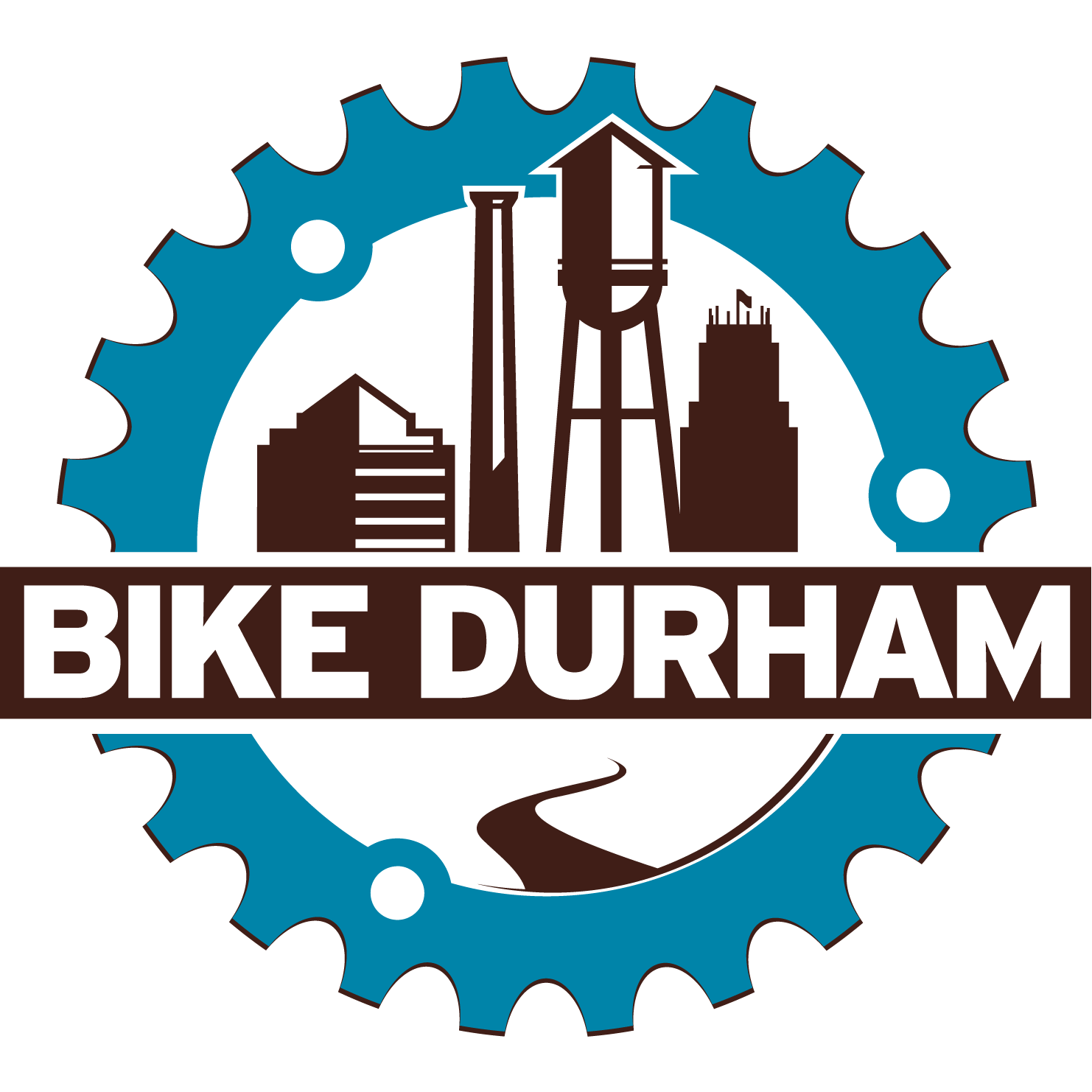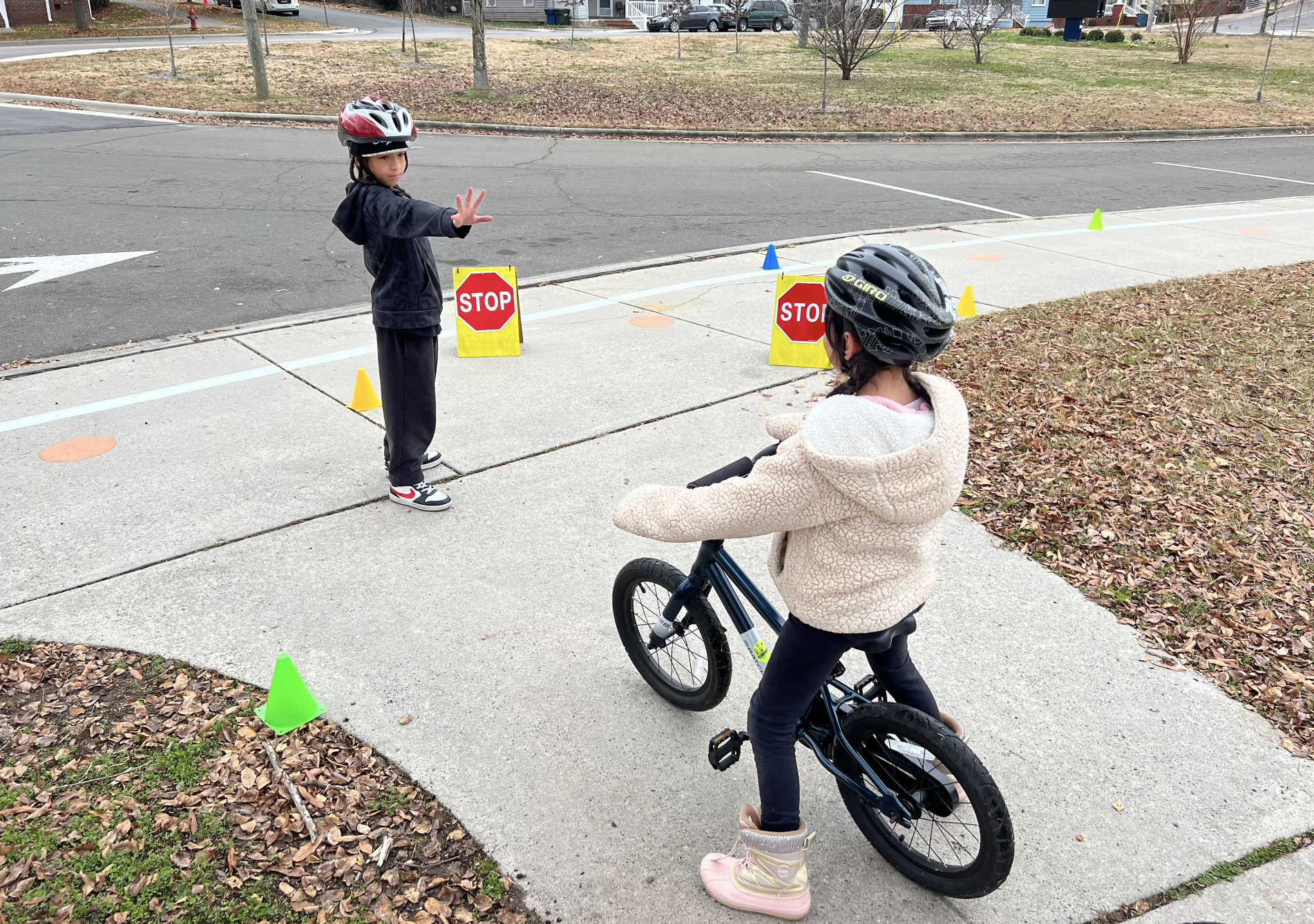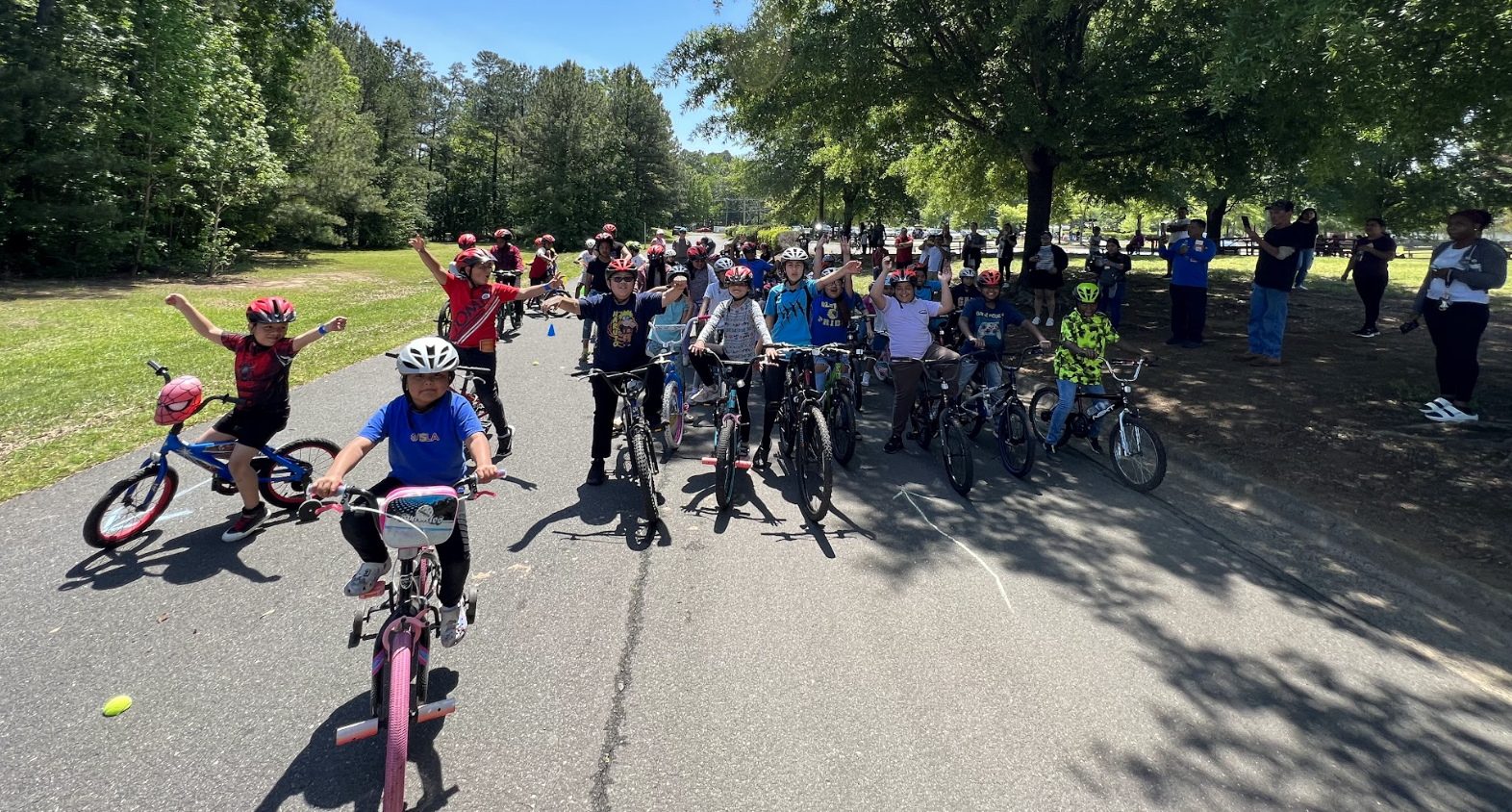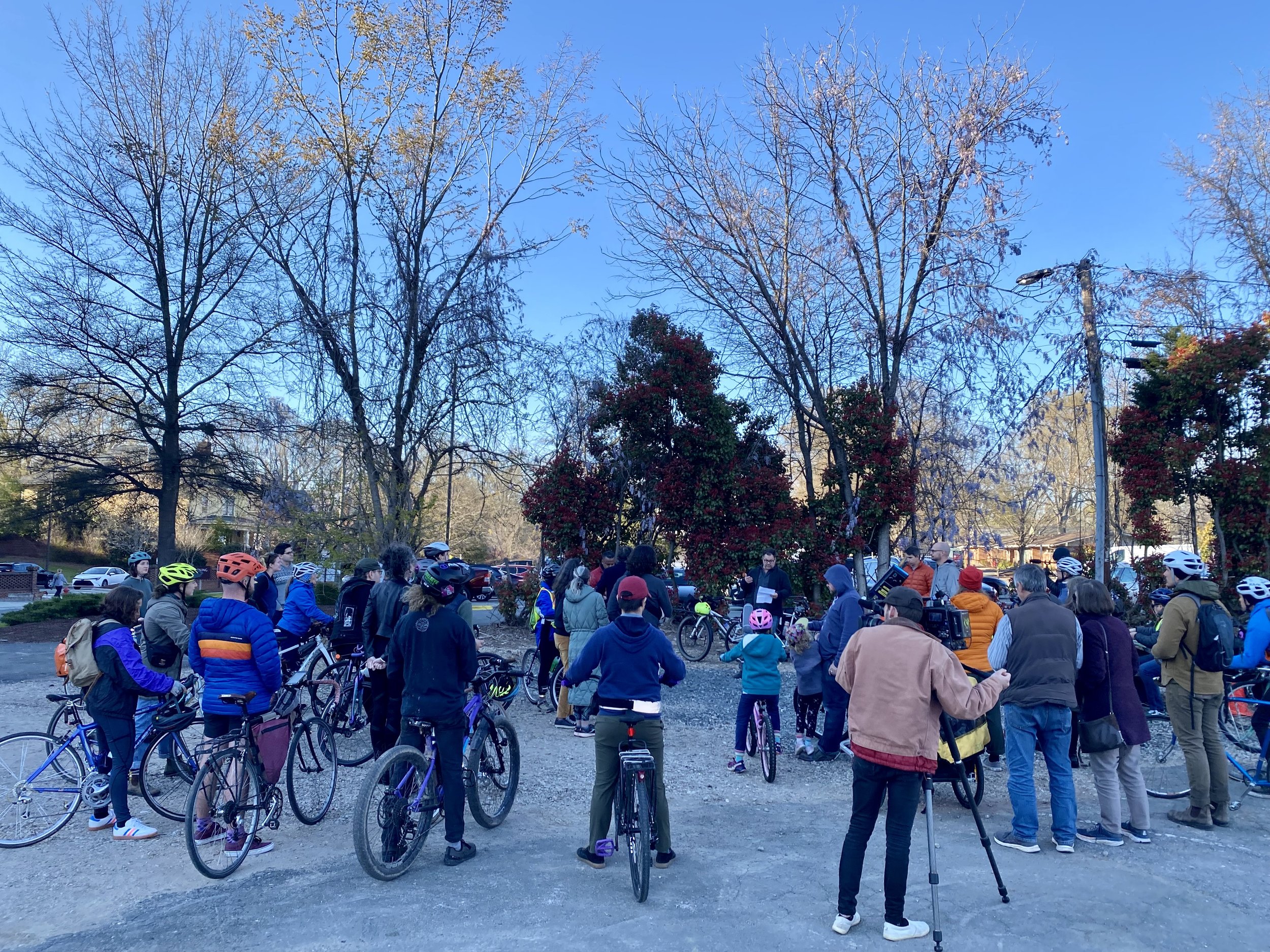Candidates’ responses to People’s Alliance PAC 2024 questionnaire
Read moreDozens gather with community leaders in celebrating Rosa Parks’ legacy with support for expanded bus service free to all in Durham
On Wednesday, February 7th, Bike Durham, Durham Committee on the Affairs of Black People, People’s Alliance, Durham Congregations in Action, and Coalition for Affordable Housing and Transit and dozens of bus riders and transit supporters were joined by State Senators Natalie Murdock and Mike Woodard and County Commissioner Wendy Jacobs at a Transit Equity Week Forum. You can watch a video of the entire forum (1 hour and 25 minutes) at Bike Durham’s Facebook page. (Note: We fixed the orientation of the image at the 20:45 mark.)
February 4th is Rosa Parks’ birthday and for the past six years, advocates for improving public transit across the country have honored her legacy by celebrating Transit Equity Day. She was an iconic figure among many of the civil rights era who chose the tactic of refusing to give up her seat on the bus. Bike Durham executive director John Tallmadge told those assembled that “they joined others from at least 28 communities across the country in making the connection to this act of resistance to highlight the rights of all people to high-quality affordable public transportation powered by clean/ renewable energy.”
Bike Durham staff member Gregory Williams speaking into a microphone
Since March 2020, GoDurham and GoTriangle bus services have been free to passengers. The lost revenues have been compensated through federal COVID-relief funding. Bike Durham advocacy campaign organizer Gregory Williams shared several stories that he had collected for riders about the impact that fare-free transit has had on their lives. “One gentleman I spoke with emphasized the profound impact of fare-free bus rides on his ability to support his sister. He highlighted that the freedom from financial constraints allows him to be there for her whenever she needs him.”
Last year, local governments adopted the Durham County Transit Plan to prioritize spending of local sales tax revenues dedicated to transit.
In describing who will benefit from the City’s proposals for new services and the extension of fare-free transit, City of Durham transit planner Jennifer Green shared statistics showing that 72% of current GoDurham riders identify as Black, and 77% report living without access to a car. (The entire slide deck is available here.)
In addition to the proposed service improvements, the transit tax revenues are also programmed for better bus stops and sidewalk connections to the bus stops. GoTriangle staff member Matthew Clark in describing their efforts to build better bus stops said, “One thing that you notice about some bus stops in Durham is that they are literally in the ditch.” He went on to describe progress that they are making to improve the bus stop conditions.
Though there are significant investments of local tax dollars in transit improvements, there remain many unfunded priorities that are needed to make transit equitable for all. This will require investments from the federal and North Carolina governments.
In a pre-recorded video message, Congresswoman Valerie Foushee shared that she was proud to be an original co-sponsor of H.R. 7039 Stronger Communities through Better Transit Act recently introduced by Rep. Hank Johnson. If passed, this bill would generate an estimated additional $29 million for transit operations in the Durham-Chapel Hill urbanized area (find the fact sheet here).
State Senator Natalie Murdock addressing the audience with State Senator Mike Woodard looking on
Senator Natalie Murdock shared, “When I think of the legacy of Rosa Parks, she was fighting for access to ride transit, and now the new frontier is making sure that everyone has access to get to the transit service. The state should provide more funding for transit services and access to transit like sidewalks.”
The Transit Equity Campaign partners Bike Durham, Durham Committee on the Affairs of Black People, People’s Alliance, Durham Congregations in Action, and Coalition for Affordable Housing and Transit call for the continuation of fare-free transit for Durham’s low-income residents and implementation of the proposed transit improvements for the coming year. You can learn more about and comment on the proposal through February 21st at this website.
City Council Ward 3 Applicants Respond to Bike Durham Questionnaire
With the results of the 2023 Council elections, the Ward 3 Council seat was left vacant with Leonardo Williams election as Mayor. The Council sought applicants for the open seat through December 21. Ten individuals applied for consideration. On January 4th, the City Council will identify finalists for further consideration. A full timeline for decision-making can be found on the City of Durham’s website.
Bike Durham asked the fourteen applicants for the Ward 3 seat for their views on local transportation issues. Below, we have reprinted the responses received.
Please note that Bike Durham is organized as a non-profit organization under Section 501(c)(3) of the tax code which prohibits us from endorsing or opposing individual candidates for public office. We can and do provide education about the candidates’ positions on issues of importance to our community.
Click the Names to Jump to Each Applicant
(Listed Alphabetically)
Chelsea Cook (has not replied)
Carolyn Daye (responded that she is no longer pursuing the appointment)
Jonathan Espitia (has not replied)
Sergio Henderson (has not replied)
Larry Ernest Lawton (has not replied)
Aaron Louv (has not replied)
Jacqueline Wagstaff (has not replied)
Alexander Williams (has not replied)
Amanda Borer
1. How often do you currently walk, bike, and/or ride transit in Durham? What prevents you from doing so more often?
I frequently walk, run and hike on our community trails. I would love to bike more-- and commute this way to/from work but am terrified of doing so with my level of skill (or lack thereof). I also have a son that I transport to and from childcare which makes this a challenge in our current environment and locations.
2. If we can achieve it, what would transportation equity look like to you?
I love the idea of 15-minute cities, or 5 minute neighborhoods where residents can walk, bike, or use public transportation to get to all of their necessary services and "choice" amenities within 15 minutes. I do think this also means that we have to make sure that folks of varying abilities, both physical and cognitive, are set up for success in using these modalities. Do we have lifts on our buses, are our drivers trained in crisis prevention or how to work with cognitive impairments or executive function loss. Do our crosswalks all have audible warnings as well as visual? How are our trails and sidewalks for wheelchair and walker use, and how could we improve it?
3. Vision Zero is a safe systems approach to traffic safety that does not accept that traffic fatalities or serious injuries are inevitable. Durham's City Council initially endorsed Vision Zero in 2017. In 2017, the five year average of motor vehicle crash fatalities was 26/year, including 5 people walking and 1 person biking. The most recent 5-year average through 2022, is 32 killed per year, including 7 people walking and fortunately fewer than 1 person killed per year while biking. Do you endorse Vision Zero and, if so, what will you do to advance the City's progress toward zero deaths or serious injuries?
This hits really close to home as I lost my sister in 2022 (Dr. Alicia Borer) in a motor vehicle accident out of state. I don't know that anything could have prevented her accident, but if there is any way to effectively and reasonably prevent MVA, I support that. I have also had friends/family that have mv into biker accidents involving major injuries and deaths and of course I support decreasing these accidents. I don't know much at the moment about how Durham is advancing towards Vision Zero but aim to do research to better my education around this initiative. Thank you for bringing it to my attention.
4. What are your priorities for improvements to Durham's transit and paratransit services so they can meet the needs of more Durham residents, starting with current transit riders and workers?
I think it would be great to replicate and expand GoDurham Access where needed to provide variable route, on-time transportation that is accessible to those that may need support riding public transit in Durham.
5. Given that the most dangerous streets and roads in Durham are state-owned, requiring NCDOT approval before changes can be made, what ideas do you have for changing the City's relationship with the NCDOT in order to make our streets safer for all users?
Leveraging Vision Zero's High Injury network to focus resources at dangerous intersections, and where needed or possible work to acquire the roads more locally from the state. Building relationships always takes time and understanding the history of such is important to move forward to changing anything in a positive manner.
6. What are the most important initiatives on your agenda to lead Durham in mitigating the impacts of climate change? With which organizations will you partner to amplify these efforts?
Reducing our carbon footprint by increasing green jobs and green spaces, decreasing the necessity of cars to get around, increasing home energy efficiency and planting (and keeping) trees. I think living small to grow helps this, making the ability to travel without a car by increasing green spaces, trails etc.
7. Many transportation infrastructure projects have taken ten or more years for the City to complete. What will you do to hold City staff accountable to timely completion of the commitments of the Durham Transit Plan and the City's Capital Improvement Program?
In my work as an administrator, I often work to manage projects. This means being organized, documenting progress, identifying gaps and following-up on others' work. I like to "get curious" and ask questions about what the next steps are and what the barriers are to moving forward. This kind of questioning, on a regular basis-- like adding it to the regular agenda, can help progress projects when stalled.
8. Would you support policies and investments to make sustainable transportation options - such as walking, biking, and riding transit - more accessible and appealing to everyone in Durham? If so, what would your priorities be?
Yes, yes, yes!! Not to harp on a singular idea too much but I believe in the 15 min cities to go small, while growing bigger. Let's invest in public transportation, accessible trails, greenways and greenspaces to be able to get where needed within a reasonable time.
9. How do you propose working across various agencies (ie - City Parks & Rec, Durham Public Schools, etc) to improve walking and biking access to schools, parks, and other locations in our region?
A big part of serving on the City Council is listening and learning. I look forward to reaching out to different departments to better understand their work and goals in general as well as to improve walking and biking access to city amenities. I think investing in city planning like the 15-min community philosophy lends itself well to helping address this question as well.
10. The costs of housing and transportation are the two highest expenses for many households. Please outline your policy and investment priorities for addressing the challenges of ensuring that everyone has access to housing that they can afford in places where they are connected to the rest of Durham and the region through public transit, walking, and biking.
I believe that affordable housing is a right for every human and is integral to a community’s and individual’s health. Reflecting much of the rest of the US, Durham’s housing prices are outpacing wages and ability for residents to afford to buy or rent within city limits. This is exacerbating the economic wealth gap that exists and has widened during the COVID and post-COVID shutdown years.
Durham has a unique opportunity to leverage existing and incoming resources with nationally known names making our city their home. From Duke University to incoming Apple, Google, etc. there are opportunities to build public-private partnerships to help us reach our housing goals.
I also believe that going smaller to get bigger by building 15 min communities within Durham helps many of these issues such as taking care of our most vulnerable populations, older adults, unhoused people, young children. This strategy allows for all to walk/bike/use public transit to get to all amenities and necessities within 15 minutes, decreasing the need for costly transportation, decreasing isolation, hosting mixed-use housing and creating a stronger sense of community.
Durham should also look into furthering their programs around incentivizing landlords and rental companies to offer affordable housing, and developers to include lower-income units. We need to review the zoning codes to verify they are serving Durham and its residents in the best way. There are also housing voucher programs and a Durham Land Trust that could be expanded. We have to think innovatively as housing issues are complex and require a multi-pronged approach to improvement.
Shelia Huggins
1. How often do you currently walk, bike, and/or ride transit in Durham? What prevents you from doing so more often?
My family frequently engages in outside activities. I generally walk or run outside several days a week. My husband rides his bike daily. For many years, he took the bus from Durham to downtown Raleigh where he worked. He would attach his bike to the front of the bus so that he would have it available for riding in Raleigh. Unfortunately, he was moved to a different location that made it no longer feasible for him to take the bus to Raleigh.
I generally do not ride transit for the following reasons: 1) in many instances, it’s not offered at the times and locations needed; 2) I’m either going short distances where I could drive in 5-10 minutes or long distances to other counties for work; or 3) I need to do something quickly, and it would take more time using transit. For short distances when it would be more feasible to walk, it’s a safety issue. There are no sidewalks to the places that I would walk to.
2. If we can achieve it, what would transportation equity look like to you?
We would definitely have more sidewalks and bike lanes. Bus service would be expanded and remain free. We would have better regional transit opportunities. People who need mobility assistance would have more opportunities for transit assistance. In general, we would have a comprehensive system that allows for people to go places using a variety of means and in a manner that’s not cost prohibitive.
3. Vision Zero is a safe systems approach to traffic safety that does not accept that traffic fatalities or serious injuries are inevitable. Durham's City Council initially endorsed Vision Zero in 2017. In 2017, the five-year average of motor vehicle crash fatalities was 26/year, including 5 people walking and 1 person biking. The most recent 5-year average through 2022, is 32 killed per year, including 7 people walking and fortunately fewer than 1 person killed per year while biking. Do you endorse Vision Zero and, if so, what will you do to advance the City's progress toward zero deaths or serious injuries?
I live in a neighborhood that lacks sidewalks. Therefore, I understand what it’s like to dodge vehicles and, as a driver, to look out for people who are out walking and running. I support our Vision Zero plan and will work to make sure that projects are aligned with our Vision Zero plan.
4. What are your priorities for improvements to Durham's transit and paratransit services so they can meet the needs of more Durham residents, starting with current transit riders and workers?
According to the City of Durham website, “The Federal Transit Administration (FTA) recently announced a $292,500 grant from the Areas of Persistent Poverty program to the City of Durham to fund a draft plan for the new Village Transit Center (VTC) near The Village Shopping Center in East Durham.” This area was selected because it was the route with the second highest number of riders. I believe that by improving transportation services in areas of high poverty, residents will be better able to get to jobs, educational and training opportunities, health care, and more. Once we start with VTC, we should also analyze what’s working and determine whether there are other places in the city that could benefit from a similar program.
In addition to this, we’ve also heard from residents regarding which routes need higher frequency services, and residents have also expressed concerns about the need to expand the hours of bus services. This is something we should continue to monitor and also look for opportunities to make the necessary changes. Regarding our paratransit services, I have heard complaints regarding the length of time for pickup, issues relating to scheduling changes, and issues related to health care appointments. My priorities would focus on remedying the issues that we’ve already heard about from residents.
5. Given that the most dangerous streets and roads in Durham are state-owned, requiring NCDOT approval before changes can be made, what ideas do you have for changing the City's relationship with the NCDOT in order to make our streets safer for all users?
Our elected officials, residents, and community stakeholders all have a role to play in influencing how decisions are made about our state-owned roads. As we know, Durham is a part of the Durham-Chapel Hill-Carrboro Metropolitan Planning Organization, and the NCDOT is responsible for carrying out road projects. While there are a number of formal relationships that aid in the transportation planning process, I think that one of the biggest issues is that we haven’t always spoken in solidarity and with one voice. We may have community groups that push for certain priorities and projects and at the same time the City or other stakeholders support something entirely different. Additionally, the NCDOT tends to focus on projects in a way that doesn’t prioritize pedestrian and bicycle options. I believe that we need to 1) make sure that we present our priorities in a cohesive voice, 2) continue to use our legislative delegation to help NCDOT understand and support our priorities, and 3) build regional support from other municipalities who may be facing similar issues. This may help us in terms of building a better relationship with the NCDOT.
6. What are the most important initiatives on your agenda to lead Durham in mitigating the impacts of climate change? With which organizations will you partner to amplify these efforts?
My overall position is that we need to take climate change seriously and start making changes at the local level to do our part. I have an education background in the sciences and a Master of Public Administration degree with a specialization in environmental policy. For several years, I worked in an environmental lab and yet, I sometimes have a hard time following the details on some of the environmental issues. But I believe that my background provides me with a different perspective in working with the community and can provide some insight into how we could do a better job of mitigating the impacts of climate change in Durham.
I worked in city government for almost nine years. Therefore, I have a good understanding of the process that city council uses to vote on issues. The documentation that they receive does not include an analysis regarding the environmental impact of any given decision. My belief is that we should include an environmental assessment or impact statement on every agenda item so that we know if we're moving in the right direction, standing in place, or moving backwards. This is a simple step that we could take to mitigate the impacts that we make as a city.
7. Many transportation infrastructure projects have taken ten or more years for the City to complete. What will you do to hold City staff accountable to timely completion of the commitments of the Durham Transit Plan and the City's Capital Improvement Program?
As a former city employee, it has been my experience the city is usually under-resourced for projects, meaning they don’t have enough staff and other resources for the projects that they manage. There is staff turnover, the number of current projects assigned to staff, new projects that are started, and supply chain issues that still impact timelines. Some of the issues involved are complex and involve many moving parts. That being said, if we want a better understanding of why the projects are taking so long to complete, we need to be willing to understand why this is happening and then instituting a plan that responds to the issues that are raised.
8. Would you support policies and investments to make sustainable transportation options - such as walking, biking, and riding transit - more accessible and appealing to everyone in Durham? If so, what would your priorities be?
Yes. Any policies and investments that are being made to support sustainable transportation options have to result in options that residents want and will actually use. I think that the options that we hear the most about include sidewalks, bus service, and paratransit services. I would work on finding ways to increase the service and efficiencies of our bus services, support the building of sidewalks on both sides of the street, and make sure that we are improving paratransit as needed. I’ve reviewed the GoDurham Better Bus Project, and I think it is a good example of building a comprehensive plan around transportation. Covered seating, bicycle racks, and sidewalks are all included in the plan.
We also need to make sure were building an efficient bus-rapid transit service which offers an opportunity for us to provide increased sustainable transportation options in Durham.
9. How do you propose working across various agencies (ie - City Parks & Rec, Durham Public Schools, etc) to improve walking and biking access to schools, parks, and other locations in our region?
In some instances, we have already done this, for example our Durham Trails and Greenway Master Plan explicitly mentions connectivity and accessibility. The Bike+Walk Implementation Plan has plans in place for the installation of sidewalks and bicycle pathways. The thing to remember is that most of those plans were made a number of years ago. I believe that it’s time to revisit those plans and review them to improve connectivity to schools, parks, and other locations and have local government agencies participate in the process.
10. The costs of housing and transportation are the two highest expenses for many households. Please outline your policy and investment priorities for addressing the challenges of ensuring that everyone has access to housing that they can afford in places where they are connected to the rest of Durham and the region through public transit, walking, and biking.
Better job opportunities can address both housing and transportation issues.
We need to focus on career progression and have honest conversations with residents about the skills, training, and experience needed to obtain better jobs. Job automation is here now. Kroger, Walmart, and Dollar General have announced plans to pilot a self-service only store. Cruise, a self-driving vehicle company is experimenting in Raleigh (which may compete with taxis, Uber drivers, and Lyft drivers), and in Durham, the Parks and Recreation Department has used automated equipment for lawn services. Certain types of jobs will become automated. But that will open up opportunities for other types of jobs. We need to connect with employers to determine what those new jobs are and work with our residents so that they understand what they need to do in order to be prepared for those jobs.
On my website, I have a plan called The 60th (www.votesheliahuggins.com). It discusses how to align jobs and housing; because there is no home that’s affordable if you can’t find a job or don’t have an income to pay for it.
Scot MacIver
1. How often do you currently walk, bike, and/or ride transit in Durham? What prevents you from doing so more often?
I do not ever use the public transit in Durham. This is due to my ability to walk to everything in downtown Durham including work. I have a car I use for grocery shopping or when I need to run anyerrands that are further than a mile.
2. If we can achieve it, what would transportation equity look like to you?
I think transportation equity would be availability to all, along with affordability of course. I think the biggest hurdle is not having enough routes and not having current routes ran enough throughout the day. We are not Chicago, but I believe the option to catch the next bus or train in 5-20 mins is the resiliency and availability I think Durham needs to strive to obtain in the long term.
3. Vision Zero is a safe systems approach to traffic safety that does not accept that traffic fatalities or serious injuries are inevitable. Durham's City Council initially endorsed Vision Zero in 2017. In 2017, the five year average of motor vehicle crash fatalities was 26/year, including 5 people walking and 1 person biking. The most recent 5-year average through 2022, is 32 killed per year, including 7 people walking and fortunately fewer than 1 person killed per year while biking. Do you endorse Vision Zero and, if so, what will you do to advance the City's progress toward zero deaths or serious injuries?
I believe better crosswalks, shorter crosswalks, and more separation from vehicles and pedestrians is needed. We should have more promenades that don’t allow cars around downtown areas, and ensure the crosswalks we have over large boulevards are tunneled or elevated. Costs of infrastructure are obviously a huge limiting factor.
4. What are your priorities for improvements to Durham's transit and paratransit services so they can meet the needs of more Durham residents, starting with current transit riders and workers?
(No response)
5. Given that the most dangerous streets and roads in Durham are state-owned, requiring NCDOT approval before changes can be made, what ideas do you have for changing the City's relationship with the NCDOT in order to make our streets safer for all users?
Somehow we need to work towards a collaborative effort so the benefits we provide to our citizens also provides a benefit to NCDOT.
6. What are the most important initiatives on your agenda to lead Durham in mitigating the impacts of climate change? With which organizations will you partner to amplify these efforts?
(No Response)
7. Many transportation infrastructure projects have taken ten or more years for the City to complete. What will you do to hold City staff accountable to timely completion of the commitments of the Durham Transit Plan and the City's Capital Improvement Program?
I believe it takes a steady effort of staying on top of the initiatives we promised to the public, but also a commitment by City staff to honor the agreements they made even if they will not be here at the completion.
8. Would you support policies and investments to make sustainable transportation options - such as walking, biking, and riding transit - more accessible and appealing to everyone in Durham? If so, what would your priorities be?
Yes, I believe transportation is expensive, but it is the first and most important domino to fall when planning/developing a city. I would prioritize all multimodal forms of transit and highly deter the private vehicle.
9. How do you propose working across various agencies (ie - City Parks & Rec, Durham Public Schools, etc) to improve walking and biking access to schools, parks, and other locations in our region?
I believe it takes collaboration and bringing all parties to the table to explain how us all working together will lead to us all doing better.
10. The costs of housing and transportation are the two highest expenses for many households. Please outline your policy and investment priorities for addressing the challenges of ensuring that everyone has access to housing that they can afford in places where they are connected to the rest of Durham and the region through public transit, walking, and biking.
I believe this is one of the most difficult problems to solve. I fully agree that housing is too expensive, and support affordable housing. However, I do not have a plan on how you invest and create amenities in an area while also keeping prices locked in at an affordable rate.
Aalayah Sanders
Disclaimer: My responses are a direct reflection of my current perspective related to these subject matters. Each however, may be subject to change with further research, additional training and community feedback if appointed.
1. How often do you currently walk, bike, and/or ride transit in Durham? What prevents you from doing so more often?
One of my favorite things to do during my breaks in the work week and on the weekends is to walk downtown Durham. I often walk the area at least 3-4 times a week. Due to usually being dressed up and working on a tight schedule I normally don’t have the capacity to Bike or ride the transit. The inconvenience of waiting for the next transit or profusely sweating before an important meeting prevents me from ultimately engaging more often.
2. If we can achieve it, what would transportation equity look like to you?
Transportation equity ultimately looks like the alleviation of any negative stigmas that may be associated with biking or riding our local transportation services. It is worthy to consider reallocation of the city transportation budget to include funding for additional bike lanes and safer routes for those who choose not to drive. Success can also look like creating partnerships with Uber and Lyft for additional options for those who may have time sensitive locations to reach.
3. Vision Zero is a safe systems approach to traffic safety that does not accept that traffic fatalities or serious injuries are inevitable. Durham's City Council initially endorsed Vision Zero in 2017. In 2017, the five year average of motor vehicle crash fatalities was 26/year, including 5 people walking and 1 person biking. The most recent 5-year average through 2022, is 32 killed per year, including 7 people walking and fortunately fewer than 1 person killed per year while biking. Do you endorse Vision Zero and, if so, what will you do to advance the City's progress toward zero deaths or serious injuries?
As a parent who often enjoys walking my son in the stroller, it’s important that I support Vision Zero to ensure safety for those who share similar related hobbies.
4. What are your priorities for improvements to Durham's transit and paratransit services so they can meet the needs of more Durham residents, starting with current transit riders and workers?
To best improve our transit services, it would be ideal to prioritize a route to specifically aid our workers in the downtown Durham area. A route that encompasses Main Street and W. Chapel Hill Street in Durham to assist workers with transportation to offices, coffee shops and other businesses. This will ultimately and hopefully help aid in the overall work/living experience. To reach more residents we could advocate to leverage partnerships again with Lyft and Uber to serve additional immediate needs.
5. Given that the most dangerous streets and roads in Durham are state-owned, requiring NCDOT approval before changes can be made, what ideas do you have for changing the City's relationship with the NCDOT in order to make our streets safer for all users?
Most partnerships are relationship based. I would prioritize meetings with NCDOT decision makers and include/consider them for related policies and discussions within our council.
6. What are the most important initiatives on your agenda to lead Durham in mitigating the impacts of climate change? With which organizations will you partner to amplify these efforts?
The preservation of our communities trees and trails play a pivotal role to our overall quality of life. If appointed to council, I will advocate for us to continue to work closely with nonprofit organizations such as Trees Durham and community advocates to educate our residents on best practices for proper disposal/recycling, community clean up days, and innovative ideas surrounding the use of recyclable items to create a greener and cleaner Durham.
7. Many transportation infrastructure projects have taken ten or more years for the City to complete. What will you do to hold City staff accountable to timely completion of the commitments of the Durham Transit Plan and the City's Capital Improvement Program?
If appointed, I will advocate for quarterly progress meetings, partnered with action items from each gathering to ensure we are reaching goals that yield timely results.
8. Would you support policies and investments to make sustainable transportation options - such as walking, biking, and riding transit - more accessible and appealing to everyone in Durham? If so, what would your priorities be?
Transportation is a vital resource and necessity for all residents. If appointed, I would intentionally research the utilization of all current modes of transportation and ways to ultimately optimize usage. Priorities will also include the evaluation of transportation possibilities which results in quicker travel time.
9. How do you propose working across various agencies (ie - City Parks & Rec, Durham Public Schools, etc) to improve walking and biking access to schools, parks, and other locations in our region?
As Durham continues to progress in development, we must integrate and include the plans for walking, biking and even scooter accessibility. This can be collaboratively accomplished by including city representatives from various agencies in the planning process.
10. The costs of housing and transportation are the two highest expenses for many households. Please outline your policy and investment priorities for addressing the challenges of ensuring that everyone has access to housing that they can afford in places where they are connected to the rest of Durham and the region through public transit, walking, and biking.
Affordable housing is a pressing issue in our community. In hopes to foster true affordability, we can start by prioritizing the needs of our housing authority, partnering with nonprofits that specialize in homeless and housing opportunity services to create holistic wraparound programs, and lastly requiring/seeking developers and property management companies that will prioritize affordable rents and housing choice voucher participation. In conjunction with these priorities, we will also need to include a plan for transportation accessibility for all development plans.
Chastan Swain
1. How often do you currently walk, bike, and/or ride transit in Durham? What prevents you from doing so more often?
I am fortunate to live in a neighborhood that has fairly good sidewalks that connect it to the West End and downtown corridors. Our home’s walkability score of 66 was a consideration when we chose where to live in Durham. However, I know that our walkability and new bike corridors are a luxury that many communities in Durham do not have. I personally don’t bike too much in the urban core, (excluding trips down the American Tobacco Trail), because I am wary of the high speed corridors and lack of consistent bike lanes. Improving walkability and multimodal corridors would be a high priority if I were appointed to council.
2. If we can achieve it, what would transportation equity look like to you?
Transportation equity would look like equal access to public transit and multimodal corridors throughout the city. Durham is a long way from this aspirational goal but generational investments through the federal IIJA and IRA, as well as advocacy at the state level and support from city divisions could move us dramatically toward the goal. I’ve seen best practices from communities that develop transportation equity through a node network, which promotes working outward from existing “nodes” of walkable and bike friendly neighborhoods to cover all underserved areas. This appears to be more effective than an ad hoc project approach because it creates sustainable areas that can fully support car independence as the city progresses towards its goal.
3. Vision Zero is a safe systems approach to traffic safety that does not accept that traffic fatalities or serious injuries are inevitable. Durham’s City Council initially endorsed Vision Zero in 2017. In 2017, the five year average of motor vehicle crash fatalities was 26/year, including 5 people walking and 1 person biking. The most recent 5-year average through 2022, is 32 killed per year, including 7 people walking and fortunately fewer than 1 person killed per year while biking. Do you endorse Vision Zero and, if so, what will you do to advance the City’s progress toward zero deaths or serious injuries?
I would absolutely support the Vision Zero initiative if on council. Durham’s core and arteries have so many vestiges of an auto dependent past that could be remedied through shifts in planning practices, improved infrastructure, and traffic calming measures. All of the measures could be addressed by the City in some capacity, and all of them would assist in reducing motor vehicle related fatalities.
4. What are your priorities for improvements to Durham's transit and paratransit services so they can meet the needs of more Durham residents, starting with current transit riders and workers?
I would need to familiarize myself with the annual and five year data of Durham’s current transit options, usage, and current build out plans before feeling confident in advocating for specific improvements, however I do support several overarching shifts in development like focusing increased density to support additional transit routes and frequency of routes, as well as supplemental transit options like Rapid Bus Transit in the absence of the previously planned light rail. For improvements to paratransit, a huge obstacle is awareness. Working with other communities around the state on their paratransit options, the main need identified over and over again is outreach. This is a relatively low cost solution that typically boosts use and awareness of services. That would be the area that I would start with.
5. Given that the most dangerous streets and roads in Durham are state-owned, requiring NCDOT approval before changes can be made, what ideas do you have for changing the City’s relationship with the NCDOT in order to make our streets safer for all users?
In my current role I assist local governments with state level relationships and advocacy of issues. This is a skillset that I’ve been able to hone over the past few years and I believe it would be a valuable skill set to have as a council member as the city strives to work with any state agency. In approaching the issue of state maintained roads, I would ensure that the city is adequately partnering with DOT to identify changes in the short and long term DOT plans that make the target roadways safer, prioritizing roadways with projects already slated in the plans, and then other high risk roadways. Additionally, identifying locally maintained roadways that can serve as alternate routes with built out multimodal infrastructure will assist in reducing the risk of more time intensive DOT projects.
6. What are the most important initiatives on your agenda to lead Durham in mitigating the impacts of climate change? With which organizations will you partner to amplify these efforts?
This effort reasonably will touch every city department and initiative. A few examples would include working with the planning department to guide density, parking, and transportation changes that reduce car dependency in any area possible. Another area would be neighborhood resiliency, addressing the stormwater and urban canopy deficits in historically low income and minority neighborhoods (that continue to experience infrastructure deficits that date back to red lining and also struggle with higher flooding risk due to placement in low lying areas along creeks and floodplains).
7. Many transportation infrastructure projects have taken ten or more years for the City to complete. What will you do to hold City staff accountable to timely completion of the commitments of the Durham Transit Plan and the City's Capital Improvement Program?
I strongly believe that local government employees take on thankless jobs and they work diligently to support the communities they serve. Infrastructure projects in particular involve massive funding and implementation processes that are reliant on so many actors, many of which are outside of the city (or the state). However, efficiency is something that I will work to address on both infrastructure and CIP objectives. I have years of experience working with state programs and infrastructure projects, and I anticipate that this experience will translate well to these issues.
8. Would you support policies and investments to make sustainable transportation options - such as walking, biking, and riding transit - more accessible and appealing to everyone in Durham? If so, what would your priorities be?
I would strive to support both. Access is an issue of infrastructure, and my positions on infrastructure development have been expressed above. Appeal is an issue of public perception, and that relies on outreach and programming. I believe the city has the capability to communicate programs and initiatives that support sustainable transit, to raise awareness for residents, but the city can also support and partner with experts in the field like Bike Durham who specialize in community level advocacy and specialized programming to advance public perception and appeal of sustainable transit.
9. How do you propose working across various agencies (ie - City Parks & Rec, Durham Public Schools, etc) to improve walking and biking access to schools, parks, and other locations in our region?
Task forces can be effective if a specific goal is identified, and they can have the benefit of combining voices and resources from multiple organizations. I frequently assist communities in identifying multiple complimentary programs/funding sources to support large projects. I see that tactic being effective in Durham when working with multiple organizations to accomplish a city wide sustainable transit network. Organizations have access to unique support programs and funding opportunities, but they infrequently work together to leverage large projects that have mutual benefit. I would hope to assist these orgs by working to create conglomerate projects that have a massive impact.
10. The costs of housing and transportation are the two highest expenses for many households. Please outline your policy and investment priorities for addressing the challenges of ensuring that everyone has access to housing that they can afford in places where they are connected to the rest of Durham and the region through public transit, walking, and biking.
There is no panacea for the oppressive cost of housing and transportation, but there are many strategies that I would like to see the city employ to reduce the burden of housing and transit costs. I’m very interested in the success stories of other cities who have adopted small and quick strategies that are more nimble than large transit and housing initiatives. One best practice is the conversion of small city owned parcels into affordable housing as infill in neighborhoods across the city. The city of Durham owns many small parcels across the city that are underutilized and affordable housing could be built as infill parcels in these neighborhoods. This would address the need for affordable housing and justification for transportation by incrementally increasing density. Another housing option that I’ve assisted communities with in the state are housing co-ops that provide the opportunity of home ownership and equity while capping the sale price to ensure affordability for future buyers. The city could look into this model and identify local nonprofits to assist with it.
Zoe Tishaev
1. How often do you currently walk, bike, and/or ride transit in Durham? What prevents you from doing so more often?
All the time! I have a bike I bought 3 years ago from Durham Cycles that I often take to ride to class, home, or downtown for a night out. I am a frequent rider of the GoDurham routes 6 and 11 and a very frequent Amtrak user. I don’t own a car and try to drive as infrequently as possible. That said, I know not all people live in places where they can ride transit or bike. A lot of roads in Durham are hostile to cyclists. Many roads are poorly lit with fast posted speeds and unsafe space for cyclists (on my commutes: Erwin, Hillsborough and Cameron, to name a few), and last year Durham was ranked one of the least walkable cities in the United States. As the Bull City grows and changes, we need to build toward a human-centered Durham.
2. If we can achieve it, what would transportation equity look like to you?
The freedom to move around Durham for daily needs safely, accessibly, and reasonably efficiently, regardless of ability status or where you live in Durham.
3. Vision Zero is a safe systems approach to traffic safety that does not accept that traffic fatalities or serious injuries are inevitable. Durham’s City Council initially endorsed Vision Zero in 2017. In 2017, the five year average of motor vehicle crash fatalities was 26/year, including 5 people walking and 1 person biking. The most recent 5-year average through 2022, is 32 killed per year, including 7 people walking and fortunately fewer than 1 person killed per year while biking. Do you endorse Vision Zero and, if so, what will you do to advance the City’s progress toward zero deaths or serious injuries?
I heartily endorse Vision Zero. We should all be alarmed that our motor vehicle crash statistics, especially involving non-motorists, are moving in the wrong direction. I am most concerned that non-motorist deaths can fly under the radar and go completely uncovered. A central part of my platform is building up the relationship with Duke University for a better Durham for all of us. But in August, a cyclist was killed at the intersection of Anderson Street and Duke University Road without so much as an announcement from either Durham or Duke. This was a preventable tragedy. As Duke and Durham both look to reevaluate their walk/bike plans, we need to bring engineers from both parties under the same roof to establish a shared Vision Zero and concrete steps to get there! I think Duke can be an incredible partner in helping us achieve zero traffic deaths or major injuries from vehicle crashes.
On the City Council, I would work to:
Partner with Duke and regional partners to unite pedestrian safety plans into a shared, comprehensive vision for the region
Implement, at minimum, a 5-ft bike lane on any road with speeds over 30 mph and buffered and protected bike lanes for major thoroughfares. Every repaving of roads must include dedicated cyclist infrastructure.
Expand lighting and visibility across Durham
Negotiate with NCDOT city ownership of state roads that cut through the city so we can have more flexibility to implement safe infrastructure
4. What are your priorities for improvements to Durham's transit and paratransit services so they can meet the needs of more Durham residents, starting with current transit riders and workers?
Increasing the frequency of service on high-usage routes, and explore opportunities in lesser-used routes where greater frequency will benefit the most people
Extending the hours of operation for bus routes. Durham cannot build a bustling night life economy if bus routes stop at midnight. A midnight stop time also leaves our late-night essential workers high and dry and dependent on alternative modes of transportation.
Expanding micromobility options (scooters, docked and dockless bikes) and explore providing discounts to vulnerable populations, building off the work of the e-bike pilot.
5. Given that the most dangerous streets and roads in Durham are state-owned, requiring NCDOT approval before changes can be made, what ideas do you have for changing the City’s relationship with the NCDOT in order to make our streets safer for all users?
I wrote about this very issue in a recent blog post. Durham needs to seriously investigate the benefits and costs of negotiating with NCDOT to buy back the high-traffic roads that cut through Durham. This is the best way we can have the flexibility to make major pedestrian and cyclist improvements to our major roadways.
We can follow the footsteps of our neighbors in Chapel Hill and Raleigh by converting our high- speed commercial stroads into pedestrian boulevards. To start, we need to bring together the region’s transportation planners in one room: I plan to bring together planners from GoDurham, NCDOT, Duke, NCCU, and Durham Tech in one room so all the different stakeholders in Durham can be unified in our vision on how we can build a more human-centered Durham.
6. What are the most important initiatives on your agenda to lead Durham in mitigating the impacts of climate change? With which organizations will you partner to amplify these efforts?
Reduce car usage by creating more efficient and reliable bus routes, and revamping major roadways to be cyclist friendly to encourage more people to bike instead of drive
Build dense, walkable housing. Dense housing is less resource intensive for the city than sprawl, requires less infrastructure to maintain, and discourages the usage of cars. Let’s build mixed-use and affordable housing in place of old and underutilized parking lots and upzone commercial nodes with potential
Revisit and slim down our zoning code to ease the approval of direly-needed missing middle housing
7. Many transportation infrastructure projects have taken ten or more years for the City to complete. What will you do to hold City staff accountable to timely completion of the commitments of the Durham Transit Plan and the City's Capital Improvement Program?
Concrete timelines and frequent communication with different city departments are crucial to understanding, and removing, major blockades to completing projects. Frequent meetings and building relationships with those responsible for executing the projects within the plans will help us stay accountable to residents and on track.
8. Would you support policies and investments to make sustainable transportation options - such as walking, biking, and riding transit - more accessible and appealing to everyone in Durham? If so, what would your priorities be?
Identify and rectify routes that frequently get off schedule. Frequency and reliability are the largest drivers of ridership. If a bus route cannot be counted on to arrive on schedule, people simply will not ride it.
Ensure that every repaved road has high-quality cyclist infrastructure relevant to the land use. All major roadways should include a well-marked and protected bike lane
Elevate the transit riding experience. Clean buses, outlets on board, and comfortable bus shelters go a long way in making riders feel safe and at ease.
Every person who rides GoDurham deserves to feel respected. I will prioritize implementing sun and rain shelters, trash cans, good seating, and basic sidewalk access to every stop in the GoDurham network
9. How do you propose working across various agencies (ie - City Parks & Rec, Durham Public Schools, etc) to improve walking and biking access to schools, parks, and other locations in our region?
Work with key stakeholders (school principals, Parks & Rec) to identify, first, how people are currently getting to key areas, and what barriers exist to non-car alternatives
Develop individualized plans for transit and cyclist infrastructure to key destinations in partnership with these stakeholders
Move toward a 100% walk-to-school rate for students who live within a mile of their school, and work with DPS to identify failure points and plan safe infrastructure to allow this to happen
Increase automated enforcement of speed limits in school zones
10. The costs of housing and transportation are the two highest expenses for many households. Please outline your policy and investment priorities for addressing the challenges of ensuring that everyone has access to housing that they can afford in places where they are connected to the rest of Durham and the region through public transit, walking, and biking.
The abolition of parking minima in Durham is a huge win. We need to start converting places for cars into places for people! There are plenty of unused, vacant lots and underused parking lots that are prime opportunities for development of dense and affordable housing. I plan to:
Repurpose existing, vacant land. Duke University owns 43 acres of land where used to be Central Campus just south of Erwin Road. Let’s work with Duke to build up this now-desolate space into a mixed-use, walkable development for the use of students, staff, and other residents, and create a new connection point between Duke and Durham
Identify other auto-centric nodes around Durham that have overbuilt and underutilized parking and encourage a repurposing of the space (i.e South Point, New Hope Commons)
Increase transit frequency and quality of transit to these nodes and explore Bus Rapid Transit (BRT)
Supporting Parents to Make Walking, Biking, and Rolling to School Safer in Durham
EK Powe mom crossing Ninth Street with bicycle
The morning commute for these EK Powe families looks a little different now that a bike train (also called “bike bus”) has been firmly established. Every Wednesday morning, a group of parents and their children meet at the park in their neighborhood and bike together to school. “My kids know that we value physical activity and bike riding to school is another way we can make a lifestyle choice that promotes sustainability,” said EK Powe parent Kyle Simmons.
Photo of EK Powe parents David Bradway and Kyle Simmons with their bicycles and Kyle’s daughter peeking through
Another EK Powe parent, David Bradway, who also co-chairs the Bike Durham Advocacy Committee, partnered with staff at Bike Durham and EK Powe Physical Education Coach Walker in the Fall to include the bike train in the school’s Walk and Roll to School Day. Now David, and his daughter, Amelia, are the first to arrive Wednesday morning, radio on and energy high as they greet the other parents and students.
Pulling out at 7:45am the short ride has them at school in plenty of time for the morning bell. The parents often grab coffee after the drop off, “Bike riding and walking to school together is a way to build community,” said Scotty Mathess, long time bike advocate and EK Powe parent.
Through our Safe Routes to School Bike and Walk Safety programs and support of both the Fall and Spring Walk, Bike and Roll to school events, Bike Durham is implementing a broader strategy to engage parents, and the school community to identify the barriers to increased bicycling and walking and to effectively advocate for change.
In 2022, Bike Durham, with a grant from Duke Doing Good in the Neighborhood, conducted walk audits with the Old West Durham and Watts Hospital-Hillandale neighborhoods in developing a traffic calming plan. Safety issues on 9th street in front of the school were obvious and we recommended strategies to slow traffic and “daylight” the crosswalks.
The community successfully lobbied for infrastructure investment and this Fall the city has used “daylighting” to make the mid-block crosswalk more visible by using posts to block off parking within 20-feet. They have also shortened the crossing distance on Knox Street by closing off a right-turn “slip lane” with new posts. The city and school system are working to install additional bike racks on campus. In addition, the speed in front of the school has been reduced from 35 to 25 matching the speed limit in front of the shops on 9th street. Building on the momentum, Bike Durham recently met with parents to hear other ideas like shutting the street down during drop off and pick up which would increase safety.
Our goal is to replicate this strategy of building relationships through our bike and walk safety classes; bring school-wide, ‘Walk Bike and Roll’ events to more DPS schools to increase awareness around the benefits; identify and partner with parent leaders to conduct safety audits; and lend our support to effectively advocate and realize needed changes.
“Starting with kids getting to and from school is starting with the foundational and basic trip that every individual has taken throughout their childhood and educational career, notes Jacopo Montobbio, Bike Durham Education Program Manager, Safe Routes to School is about putting policies, physical infrastructure, and programs in place to enable families to choose to walk and bike to school, as well as other places, safely.”
Kristen Brookshire, the community transportation planner for DPS, believes that advocating for Safe Routes to School isn't just benefiting the students, but the community in Durham as a whole. “If we’re making it better for kids, it’s going to be better for everyone,” said Brookshire. “It’s going to be better for the parent with a stroller. It’s going to be better for the grandfather with a cane. It’s going to be better for the person trying to get to work.”
Bike Durham will continue to work to deepen partnerships with the 13 schools receiving our bike and walk safety program this school year. We are making strides now to conduct a safety audit at Eastway Elementary. The community around Hope Valley Elementary school held a summer block party with a main topic of conversation focused on how to safely walk and bike to school; they are interested in learning from the leaders of the bike train at EK Powe. Bike Durham serves an integral role in connecting parents and partners to learn from one another and build a network of families advocating for increased investment in bike and pedestrian infrastructure to ensure accessibility and safety for all families in Durham.
If you would like to help lead efforts to increase walking, bicycling and rolling to your school and within your community, please email us at saferoutes@bikedurham.org with the subject line Safe Routes to Schools.
2023 Durham Candidate Questionnaires
Candidates’ responses to Bike Durham’s 2023 questionnaire
Read moreChildren Deserve Safe Places to Walk and Bike, Starting With the Trip to School
‘They Just Made it Happen’
Durham’s Safe Routes to School program started humbly as an idea that Open Streets volunteers, Mark Dessauer and Jen McDuffie, wanted to see brought to Durham back in 2011. This has grown into an eagerly anticipated program, where Bike Durham staff touch the lives of thousands of elementary school students each year.
Jen McDuffie, a public health professional, former Durham resident, and former Bike Durham board member, had been intimately involved with the Safe Routes to School Program for ten years until she passed the torch to our organization in 2021.
John Rives, Mike Fink, Jen McDuffie, Frank Glover, Ellen Beckmann, and Dale McKeel (pictured Left to Right) at the Eastway Elementary Walk, Bike, & Roll to School Day event in 2014
Starting in 2015, McDuffie wrote grants to buy bicycles and pay helpers - Durham Bike Co-op faithfuls Mike Fink, Ralph Griesenbeck, John Rives, Tim Smith, and Gary Tencer - to teach the classes with her. In addition to the Co-op, she had connections with Durham Congregations, Associations, and Neighborhoods (CAN), the Partnership for a Healthy Durham, the East Durham Children’s Initiative, the Bicycle & Pedestrian Advisory Committee (BPAC), and at Durham Public Schools. All these partnerships played an instrumental role early on, setting the foundation and tone for Safe Routes to School in Durham.
“When Jen Mcduffie first started, she recruited a bunch of her friends and would put the bikes in the back of their pickup truck to move them around,” said Jennifer Delcourt. “It was an idea and they just made it happen.”
Coach Nisha Watson taking a selfie with students during the May 2015 Walk, Bike, & Roll to School Day event
Delcourt started working with the Safe Routes to School program as the regional school coordinator in 2014, covering nine counties including Durham. She started working with McDuffie trying to provide as much support as she could to the schools in Durham, such as printing flyers and introducing Safe Routes to Schools to many schools in Durham.
With one common goal in mind, they all came together to provide these programs and opportunities for students in Durham, despite the limited resources and challenges that they encountered.
At one of those schools, Eastway Elementary, they found a real partner in Nisha Watson, the P.E. teacher at the school. She has advocated for the program from the start. Although the idea of facilitating these activities for her students was intimidating, the support built in place made it easier for her to embrace this opportunity.
“They all put me at ease since the beginning,” Watson said. “Coming in with that partnership has been huge because I don’t think I would have been able to do it on my own.”
Keeping It Going
In 2019, McDuffie and Dale McKeel, the Bicycle-Pedestrian Coordinator for Durham, wrote a grant that was awarded by the state department of transportation to fund Safe Routes to School programming in Durham. Following delays due in part to the COVID-19 pandemic, in early 2021 the City sought proposals for a contractor to lead the Safe Routes to School program. McDuffie approached Bike Durham executive director John Tallmadge about a partnership, and together they were successful in winning the City contract. This established Bike Durham as the funded provider of Safe Routes to School programming, including bicycle safety training courses, and support for schools, parents, and students in holding Bike, Walk, & Roll to School day activities each May and October.
McDuffie planned to move from Durham to Vermont in Summer 2021, so Tallmadge knew they needed to keep it going by finding new staff to continue what McDuffie had started. Through the hiring process, Bike Durham was able to bring on both Jacopo Montobbio, a former bikepacking tour leader in Europe and New England, and Stephen Mullaney, a longtime classroom and outdoor educator working at Merrick-Moore Elementary, in part-time roles to carry on the program.
During that school year, with the fleet of bicycles that McDuffie had acquired in previous years, Montobbio, Mullaney, and volunteers Ruth Browne and Bes Baldwin were able to deliver bike safety classes at six schools. By May, nineteen schools participated in Bike, Walk, & Roll to School events.
Picking Up Momentum
The word was getting out to other schools in the Durham Public School system and more P.E. coaches were requesting classes than could be accommodated. Fortunately, Bike Durham had also been successful in telling the stories of the young students’ lives that were being touched by this program, and additional funding started coming in.
During the Summer of 2022, Bike Durham received gifts from an anonymous donor connected to a former board member and from Crum & Forster, employer of another former board member, enabling the organization to purchase a second fleet of bikes for the third and fourth grade classes, and a fleet of balance bikes to start a kindergarten level class at Merrick-Moore Elementary.
During Fall of 2022, the Pedals to Possibilities fundraiser brought in additional money to pay more educators to teach the classes to more grade levels at more schools. That school year, more than 1,200 students at twelve schools participated in bike safety classes. More than 15,000 students participated in Bike, Walk, & Roll to School events.
Bike Durham also learned in Spring 2023 that funding would continue for at least the next two years through a County-directed federal grant and the next round of Safe Routes to School funding from North Carolina Department of Transportation.
“Once you give seed money, it is up to the people who receive it to keep it going and get it permanently funded,” McDuffie said. “We’ve done that and it’s beautiful.”
‘They’re Going to Be Advocates One Day’
Students with bikes and scooters celebrating their arrivial at Lakewood Elementary during the 2017 Walk, Bike, & Roll to School event.
Starting with kids getting to and from school is starting with the foundational and basic trip that every individual has taken throughout their childhood and educational career. According to Montobbio, our Education Program Manager, Safe Routes to School is about putting policies, physical infrastructure, and programs in place to enable families to choose to walk and bike to school, as well as other places, safely.
The education program has been successful because so many kids love the feelings of accomplishment that comes from learning new skills, and they love feeling their bodies move around outside. Momentum has built as Safe Routes to School becomes more prominent within the schools it works in. Students and parents are now expecting bicycle safety classes and activities year after year. But Safe Routes to School is intended to have a deeper impact than just teaching kids how to ride a bike. It teaches the benefits of having safe and accessible transportation and also teaches students to be advocates for themselves and their community.
“They're going to be advocates one day like they're advocating now for themselves to have more of these classes,” said Coach Watson of Eastway Elementary.
Over the years, the Safe Routes to School Program has been a strengthening partnership with the City of Durham, Durham County, and the Durham Public Schools district. All have shared goals of making it safe and attractive for more families to choose walking, biking, and rolling to school. Kristen Brookshire, the community transportation planner for DPS, believes that advocating for Safe Routes to School isn't just benefiting the students, but the community in Durham as a whole.
“If we’re making it better for kids, it’s going to be better for everyone,” said Brookshire. “It’s going to be better for the parent with a stroller. It’s going to be better for the grandfather with a cane. It’s going to be better for the person trying to get to work.”
*According to the U.S. Department of Transportation, Safe Routes to School is an approach that promotes walking and biking through infrastructure improvements, safety education, incentives, and many more methods to work towards the overall goal.
Timeline of Bike Durham’s History
Prehistory
2006
The Durham Bike Co-op is founded in the Old Five Points neighborhood. The City of Durham unveils the city’s first bicycle and pedestrian plans, and issues bonds in 2006 and 2008 to partially fund them.
Durham Bicycle Coalition
2009–2010
Copy of poster distributed advertising the organizing meeting for the Durham Bicycle Coalition, precursor to Bike Durham.
Longtime Durhamite Adam Haile is chatting with Rachel Raney, a recent transplant from the San Francisco area, outside the preschool their kids attend, when they see a police officer scold a parent for bringing a child to school in a bicycle trailer. Haile and Raney team with Mark Dessauer, Lisa Miller, and Jack Warman to launch an advocacy group called the Durham Bicycle Coalition. They set up a website, post notices on the Bike-Ped listserv (managed by the City), and leave flyers at the Bike Co-op. Momentum builds when the joint City-County Bicycle and Pedestrian Advisory Committee (BPAC) organizes Bike Month activities with help from the Co-op, which moves to new quarters near the old Durham Athletic Park (the Durham Bulls’ original home) on Morris Street.
2011
The inaugural Tour de Fat bike festival is brought to Durham by New Belgium Brewery (occurs annually through 2016).
2012
Around 70 people attend initial discussions in the Trotter Building on Geer Street to found a new membership-based group, the Durham Bicycle Coalition. Omisade Burney-Scott facilitates. The interim board includes Casey Collins, Adam Haile, Cameron Heath, Branson Kimball, Kevin Magill, Lisa Miller, Rusty Miller, Chris Russo, Carl Sundstrom, Jack Warman, and Debra Campbell West, with Haile and Miller as co-chairs. The East Coast Greenway Alliance acts as fiscal sponsor.
Bike Durham
2013
The name is changed from Durham Bicycle Coalition to Bike Durham. Its mission, bylaws (borrowed from another organization), and 501(c)(3) status are established, and Facebook and Twitter accounts set up. Branson Kimball’s friend Morris Young designs a logo. We join BPAC in planning Bike Month events and we bring bike parking to the Eno River Festival, using BPAC’s bike racks, and bike valet parking to Centerfest. We organize a ride to the movies to see PeeWee’s Big Adventure. A “kidical mass” ride begins Bike Durham’s engagement with children, which will continue with Walk, Bike & Roll to School activities, and, later, Safe Routes to Schools. Seth Vidal, a prominent local bicyclist, is killed while riding on Hillandale Road, galvanizing the community. The nascent organization has 17 members, including 11 founding members.
Original Bike Durham logo in teal and brown designed by Morris Young.
2014
The first working board includes Ryan Asher, Carlo Diy, Kosta Harlan, Bethany Kell, Christin Lampkowski, Harry Mendez Jr., Chris Russo, Rachel Waltz, and Jack Warman. Warman is elected board chair. Bike Durham buys coffee & donuts for City Council, for whom sidewalks become a priority. Investments are made in changes to West Club Boulevard, without consideration for cyclists. Warman presents to Durham Area Transit Authority bus drivers about how to interact with bikes. Bike Durham hosts a bicycle film festival at the Durham Arts Council, a major expense (at the time). The first Bike-a-Bull City event (named by Russo) is held at Bull McCabe’s.
2014–2015
In a six-month span, four Durham cyclists—Pamela Lane, Isidro Razo, Tony Morris Turner, and Kent Winberry—are killed in crashes.
2015
Ride of Silence Banner with event logo and words “Silently honoring bicyclists killed and injured on our streets
In light of recent cyclist deaths, a community meeting draws over 100 people. Bike Durham begins leading the annual “Ride of Silence,” an event that takes place in May throughout the U.S. to mourn killed bicyclists. It gains a lot of volunteers and more of an advocacy focus, and wins an Indy Week “Citizen Award.” NCDOT entertains a potential Durham-Chapel Hill Boulevard road diet, while the City Council is fine with the status quo. Bike Durham reaches out to neighborhood groups, local businesses, and City Council members, gathering more than 1,000 signatures on a petition supporting the road diet. In June, Board Chair Christin Lampkowski live-tweets the City Council meeting where they vote 7-0 in support of the road diet. Bike Durham conducts its first City Council candidate questionnaire. Bike-a-Bull City is held at Ciderworks.
2016
Bike Durham pushes board member Bryan Poole’s hire as a bicycle-oriented planner in Durham’s Transportation Department. He wins the job and steps off the Bike Durham board. Bike-a-Bull City is held at Ponysaurus Brewing. The Durham Bike Co-op moves to Duke Park, where it remains today.
2017
Membership exceeds 60 for the first time. The logo is updated to its current, more colorful design. Former board member Poole, now working for the City, managed the Bike+Walk Implementation Plan, bringing it to City Council adoption in 2017- these are the improvements that the City is still working to complete in 2023. Bike-a-Bull City is held at Durty Bull. Bike Durham begins participating in Durham’s December holiday parade. James Nishimuta is board chair.
2018
Photo and poster design by Toro Town Storyworks.
Membership exceeds 100. Bike Durham pushes for protected bike lanes when Broad Street is resurfaced, but the new design features only painted lanes. The Advocacy Committee devises plans for a citywide Low-Stress Network of connected, protected bike infrastructure. Bike Month Kick-off is held in partnership with Durham’s Bicycle & Pedestrian Advisory Committee (BPAC) at Ponysaurus Brewing. Landis Masnor is board chair.
2019
Membership exceeds 200. Board starts the year adopting a broader mission statement and a commitment to center racial equity. Bryan Poole leaves the Department of Transportation. Bike Durham rents space at the Re:City co-working space for meetings. Masnor leaves Durham, but not before urging board members to hire an executive director to raise capacity to a higher level. Bike-a-Bull City is held at the Scrap Exchange.
2020
Membership rises to 300. Bike Durham hires former GoTriangle leader John Tallmadge as its first executive director, and he goes to work fundraising for an organization that has never had more than a $10,000 bank balance. The COVID-19 pandemic causes an upsurge in bicycling and neighborhood walking, and a drop in transit ridership. Buses go fare-free and introduce rear-door entry to protect drivers; Bike Durham distributes masks at Durham Station. Tallmadge and Erik Landfried launch the Transit Equity Campaign in partnership with the Durham Committee on the Affairs of Black People, People’s Alliance, Durham Congregations in Action, and the Coalition for Affordable Housing & Transit. Allison Shauger is board chair.
2021
Membership approaches 400. We partner with former board member Jen McDuffie submitting a winning proposal to be the program manager for the City’s Safe Routes to School program. Following Jen’s planned departure for Vermont, Jacopo Montobbio and Stephen Mullaney are hired part-time to lead the Safe Routes to School program. We contract with Nikola Milenkovic to work with the Burch Avenue neighborhood and Durham’s Transportation Department on traffic calming. We win adoption of a 2050 long-range transportation plan that removes highway expansion projects toward meeting goals of zero carbon emissions, zero deaths or serious injuries, and zero racial disparity of access. Bike Durham also supports Council adoption of one-half penny property tax dedication to equitable and green infrastructure projects. Move-a-Bull City (rebranded from Bike-a-Bull City to include a pedestrian/transit focus) is held at the Scrap Exchange. Marc Maximov is board chair.
2022
Comparison of traditional approach to traffic safety and the safe systems Vision Zero approach
Bike Durham is named “Advocacy Organization of the Year” by the League of American Bicyclists. An anonymous donor makes a three-year gift that greatly increases the organization’s financial capacity, enabling the Board to hire Tallmadge on a full-time basis, and to create full-time positions for director of development and communications (Nancy Cox) and manager of education programs (Jacopo Montobbio). We contract with Ali Shoenfelt and Nikola Milenkovic to work with Old West Durham and Watts Hospital-Hillandale neighborhoods on traffic calming plans. Matt Simpson, husband and father of two young children, is killed bicycling across Guess Road with his family. In response, we organize a memorial ride and a volunteer Safe Streets Research Team. Post-COVID, monthly community rides and meetings return. Move-a-Bull City is held at Golden Belt. In November, we hold our first event marking the World Day of Remembrance for Road Crash Victims, calling on the City to fund a Vision Zero Coordinator and to adopt a Vision Zero Action Plan within a year. Marc Maximov continues as chair.
2023
We are nearing 500 members/donors. Bike Durham hires Surrayyah Chestnut as Advocacy Campaign Organizer, and two new half-time lead educators (Ashley Scott and Desiree Squire) for the Safe Routes to School program. We organize a successful campaign urging City Council to fund #VisionZeroDurham - including the Vision Zero Coordinator position and $40 million of sidewalk, safe crossings, bicycle facilities, and traffic calming. 10th anniversary activities kicked off at the Museum of Durham History during Bike Month. Shaun King is board chair.
Our Safe Routes to School Program Continues to Thrive
The 2022-2023 school year has been the most successful year to date for our Education and Safe Routes To School program. We’ve taught more students (over 900!) at more schools (12) than ever before! We’ve supported more schools in holding off-campus bike, walk, and roll to school events and have begun building conversations with parents at several schools about starting ongoing walking school buses or bicycle trains.
We’ve set the bar high for the next school year and we received great news this Spring that will enable us to keep the momentum going. First, Durham County awarded Bike Durham with a $175,000 grant of federal funds to expand our programming over the next two years. Then, Durham Public Schools was awarded federal grant funds through State’s Safe Routes To School program. The combination of these resources puts us in a position to hire more staff to deepen our relationships with individual schools and with DPS administration. We expect to make great strides in educating students in biking and walking safety that more and more will be able to practice on their way to school.
2022-2023 Recap
We had ambitious plans at the beginning of the school year: offer our 4-weeks-long program to students at 12 DPS Elementary and to have 6 end-of-class celebrations throughout the year. The response from Physical Education (PE) coaches and principals was tremendous, and we held classes at the following elementary schools: Merrick Moore, E.K. Powe, W.G Pearson, Pearsontown, Eastway, Fayetteville, Lakewood, Y.E. Smith, Glenn, C.C. Spaulding, Burton, and Eno Valley.
Due to our consistently lousy weekend weather conditions, we were only able to hold four end-of-class celebrations. These events are celebrations of bike safety activities, where all students at the schools, and their families are invited to participate on a Saturday. We always love seeing those that just attended the bike safety class program take the lead in showing others what they’ve learned: peer-to-peer instruction at its finest!
All of the PE coaches have been super to work with, however there are two standouts - Coach Watson at Eastway and Coach Wilson at Merrick-Moore - who we showered with love and praise at our first ever PE teacher's recognition event. Durham Public Schools, the City of Durham, and the Bike Durham staff celebrated the efforts made by our community school leaders to bring bike safety classes to their classrooms, gyms, and playgrounds.
This school year was also good in terms of Bike, Walk & Roll events, as in October 2022, 19 Elementary schools held events, celebrating the benefits of biking and walking to school, and the importance of safe access to the school infrastructure. These events also help to establish and strengthen social connections between families, schools, and local businesses, reminding us of the crucial and central role of a school in a safe, healthy, and vibrant community.
We feel safe to say that what we are doing in Durham is groundbreaking. We are pushing to expand our programs to as many schools as possible; to expose as many students, teachers, and families to more than just bike safety. We are looking to engage Durham residents of all ages and empower them to walk, bike, and ride transit more often.
Great things happen when riding bikes and our students can certainly prove it. Nothing feels as cheerful and hopeful as seeing a young student progress through our course, go from hesitancy and uncertainty with balancing on a bike to being able to ride with confidence and to show their friends how far they have gone in such a short period.
Finally, we are so grateful to the City of Durham for selecting us to manage this program over the past two years, to Jen McDuffie (former board member and volunteer extraordinaire) for having done this work for years and for having the foresight to assist the City in submitting a grant application, and to donors to last year’s Pedals to Possibilities campaign that made our program expansion possible this Spring.
Vision Zero Durham
Remembering John Allore
As I was preparing to write this post last Thursday about our Vision Zero Durham rally and comments at the City Council public hearing on March 20, I heard the tragic news that John Allore, Durham’s budget director, had been killed while riding his bike in western Orange County. I had known John from my years working at GoTriangle and more recently through Bike Durham’s advocacy on City budget priorities. My impression of John was always that he was genuine, caring, and good at his work for the City. I was also always interested to hear about his acting, too. He was an avid bike rider, both for recreation, and as a commuter (bike-bus-bike from Carrboro to Durham).
I have been in touch with some of his family, as well as his colleagues at the City, about whether there is support we can offer to honor John’s memory. We are also coordinating with advocates in Chapel Hill and Carrboro, where John lived. As a reminder to all, we will host the annual Ride of Silence on Wednesday, May 17 at 6pm, starting downtown at CCB Plaza.
John’s death is yet another tragic reminder that the time is past due for the local, regional, and state governments to change our approach to transportation to Vision Zero.
Calling for Vision Zero Durham at City Hall
On Monday, March 20th, nearly fifty people gathered at the intersection of W. Main, Morgan, and Watts Streets to rally for safer streets and to protect one another as we rode to City Hall for the public hearing on the budget. BIke Durham Advocacy Committee Co-Chair Erik Landfried remembered Tysiea Gurley and Mike Possley who had both been killed recently while crossing Durham streets. He also spoke about the serious injuries suffered by Noah Goyette when the bike lanes on West Main Street were blocked by idling cars and he hit a pothole when swerving to avoid the cars. On behalf of Bike Durham, Erik called for the City to invest in a Vision Zero Durham agenda:
Fund a full-time, dedicated Vision Zero Coordinator. The person in this position will lead an interdepartmental, interdisciplinary team in identifying, prioritizing, and implementing measures to reduce traffic deaths and serious injuries. It’s important to hire this position now as a Vision Zero Action plan will be developed later this year.
Fund the repair of existing sidewalks, bring curb ramps up to ADA standards and convert all existing bike lanes into protected bike lanes.
Provide annual funding commitments for traffic calming and the completion of safe city-wide sidewalk and protected bike lane networks.
Residents, many with their bikes, gathered to rally for safer streets.
Brian Hawkins spoke on behalf of the Durham Bicycle & Pedestrian Advisory Commission (BPAC), stating, “...what we are asking for is the city to prioritize the usability and safety of the infrastructure in which we have already invested. Bike lanes are a welcome addition to our cityscape, but it is clear that simply painting a stripe on the road is not sufficient. In fact, we would argue that a bike lane that is suddenly and unpredictably unavailable creates a more dangerous situation than no bike lane at all, which we saw right here last month.
We call on the City Council to prioritize the following to address this issue:
1. The addition of physical barriers to existing bike lanes
2. More consistent enforcement of parking restrictions
3. A program and policy whereby the City conducts public visits to sites of serious and/or deadly crashes involving pedestrians or cyclists, and produces crash memos that describe how similar tragedies can be avoided in the future”
Following the media event, we created a cyclist-protected bike lane to start our ride to City Hall for the public hearing. Seven of us signed up to speak to Council in support of the Vision Zero Durham agenda. I highly encourage you to watch the remarks made at this link. In addition to powerful comments in support of the Vision Zero approach to traffic safety, there were others advocating for expansion of the community safety department, known as the HEART program.
We received excellent media coverage, including CBS17, WRAL, News & Observer, IndyWeek, and 9th Street Journal.
Why Do We Advocate for Vision Zero?
Bike Durham was incorporated ten years ago as a voice for residents who wanted streets safe for people on bicycles. We have since broadened our vision to a transportation system that is safe, affordable, and sustainable for everyone, regardless of who they are or where they live. One key approach to achieving this vision is known as Vision Zero.
According to the Vision Zero Network, Vision Zero is a strategy to eliminate all traffic fatalities and severe injuries, while increasing safe, healthy, equitable mobility for all. First implemented in Sweden in the 1990s, Vision Zero has proven successful in communities across Europe — and is now gaining momentum in American cities and states.
Vision Zero is not just a catchy slogan. It is a fundamentally different approach to thinking about our transportation system.
Again according to Vision Zero Network, Vision Zero is a significant departure from the status quo in two major ways:
This approach recognizes that people will sometimes make mistakes, so the road system and related policies should be designed to ensure those inevitable mistakes do not result in severe injuries or fatalities. This means that system designers and policymakers at the city, state, and federal levels are expected to improve the roadway environment, policies (such as speed management), and other related systems to lessen the severity of crashes.
This approach is multidisciplinary, bringing together diverse and necessary stakeholders to address this complex problem. In the past, meaningful, cross-disciplinary collaboration among local and state traffic planners and engineers, policymakers, and public health professionals has not been the norm. Vision Zero acknowledges that many factors contribute to safe mobility — including roadway design, speeds, behaviors, technology, and policies — and sets clear goals to achieve the shared goal of zero fatalities and severe injuries.
More is described in Vision Zero Network’s document Core Elements for Vision Zero Communities and their recorded webinar Vision Zero 101.
Here in Durham, the City Council adopted a Vision Zero resolution back in 2017, following the adoption of a Vision Zero program at the state level in 2015. Our regional transportation organization also adopted a goal of zero deaths and serious injuries by 2050. The goals have been set, but the paradigm shift has not occurred. In recent meetings with NCDOT engineers, it is clear that safety is not yet prioritized ahead of minimizing traffic delay. We still hear City staff putting too much emphasis on the behaviors of people driving, walking, biking, or rolling, and accepting enough responsibility for the changes that they could make to our streets to encourage slow speeds and safe spaces for everyone to use our streets.
We need our City leaders to recommit to Vision Zero through this year’s budget by approving:
Funds for a full-time, dedicated Vision Zero Coordinator. The person in this position will lead an interdepartmental, interdisciplinary team in identifying, prioritizing, and implementing measures to reduce traffic deaths and serious injuries. It’s important to hire this position now as a Vision Zero Action plan will be developed later this year.
Funds for the repair of existing sidewalks, bring curb ramps up to ADA standards and convert all existing bike lanes into protected bike lanes.
Annual funding commitments for traffic calming and the completion of safe city-wide sidewalk and protected bike lane networks.
You can sign our petition in support of the Vision Zero Agenda and share it with your friends. Our goal is 500 signatures by April 30.
Teaching and Learning Perseverance through Safe Routes to School
Students and families participating in Walk and Bike to School Day in October 2021
We have a little story about perseverance we want to share with you. On a cheerful sunny morning this past December at Eastway Elementary, we ended a bike riding safety class and Jacopo asked the 3rd grade students what they were proud of that day. One 8-year old girl, who we'll call Jasmine, raised her hand and said, “At last week’s class, I wasn’t good with balancing, but today I started to get it.” Jasmine’s classmates started to clap and her smile grew and grew. That feeling of balancing between two wheels: for children, that’s magic! The reality, though, is that it’s the result of taking a risk, falling, getting back up, and persevering by trying something a little different, building on what feels like it’s working, until suddenly…you get it and it feels incredible.
Perseverance is one of the lessons we teach students through our bike riding safety classes, and it’s a lesson we’re learning ourselves as we develop our Safe Routes to School program. Our goal is for more and more families to walk, bike, or roll to school every day. There are so many benefits for students, their families, and our communities, but there are significant obstacles. From siting schools on roads without sidewalks and protected bike lanes, to designing streets for high speeds without safe crossings, to the disconnections between many schools and their surrounding neighborhoods - both physically and culturally.
Our approach is to combine teaching students bike riding and walking safety skills, promoting and encouraging families to try walking and biking to school, and organizing to call for building sidewalks and protected bike lanes between schools and neighborhoods. We testing these strategies to learn what works, and we start at Eastway Elementary where we’ve had great support from PE Coach Nisha Watson and Principal Dr. Jackaline Teel.
Starting with Eastway Elementary
Thanks to a relationship that former Bike Durham board member Jen McDuffie already had through past Safe Routes to School activities with Eastway Elementary, we reached out to Coach Nisha Watson in September 2021 to implement programming and test new strategies in order to expose more students and families to walking and biking activities.
The first partnership activity with Eastway was the October 2021 National Walk to School Day. The whole school met on a sunny morning just before Halloween at the Save A Lot store across Alston Avenue to walk together to school: buses were rerouted to safely drop students in the parking lot and car drivers did the same. Nearly 400 students and parents, many in costume, walked along the streets around the school campus, finishing with a big welcome from the Principal and PE teacher. They gave powerful speeches about the importance and the benefits of walking and biking as transportation, both for personal and community health.
Building on the momentum from that event, we started our bike safety classes program in December 2021, following a model we had used at Merrick-Moore and Spring Valley elementary schools. The program at Eastway was such a success that we decided to organize a last-minute “end-of-class celebration” on a Saturday morning on the school campus: parents, teachers, and students joined our 2-hour session of bike safety instructions, where we transformed the whole car parking lot into multiple biking courses: the students that participated to the Bike Safety Classes program were able to show their skills to Eastway students of all grades and their families. Thanks to the generosity of Ari Birenbaum of Ninth Street Bakery, everyone also celebrated with delicious cookies.
Eastway Elementary students celebrating at the end of the bicycling celebration on a Saturday in December 2021.
The event was intended to be one-of-a-kind: for the first time we decided to organize a bike-themed event outside of the school week. It was so well received, though, that we have started incorporating such celebrations in our bike safety classes program: for the current school year, we are planning on having six of these events throughout the school year.
Now that we feel pretty confident with the bike riding safety classes, we have started a conversation with DPS transportation, PE Teacher Coach Watson and Eastway Parent-Teacher Association (PTA) to establish a regular series of walking and biking activities to school. We want to engage families in establishing a walking bus activity that aims to help families that walk their children to school and to encourage more to do so.
In February we joined the Eastway PTA meeting where we presented the concept to the principal, the teachers, and some parents: hopefully, in the spring we will have the first Walk To School bus at Eastway Elementary!
The progress of activities at Eastway will not only be beneficial for that school community. We will learn from our work there to spread successes to other school communities. During the 2022-2023 school year we will be present in 12 DPS Elementary schools with Bike Safety Classes and what we did at Eastway will shape our programming to help us be successful in all of those schools.
As we gain experience with promoting regular walking and biking activities, we also look forward to taking another step toward our goals next year. Thanks to our supporters, we’re adding an Advocacy Organizer who will work with parents, schools, and DPS to build on family interest in identifying infrastructure needs and advocating for their implementation with the City and NCDOT.
Again, we plan to start at Eastway, learn what works, and persevere until we succeed at giving every family the opportunity to choose for their students to walk, bike, or roll to school.
